Chief Executive Officer Welcome Package - August 2019
- Chief Executive Officer Welcome Package - August 2019 (PDF, 1.06 MB)
August 2019
Table of contents
- Introduction
- Parks Canada mandate and places
- Parks Canada overview: Who we are
- Financial overview
- Human resources overview
- Legislative responsibilities
- Acts for which the Minister is responsible
- Other Acts of importance
- Parks Canada overview: What we do
- Ecological integrity
- Marine conservation
- Commemoration and cultural heritage conservation
- Visitors
- Safety
- Infrastructure and municipal-type services
- Real property management
- International engagement
- Operations
- Protected areas establishment and conservation
- Indigenous affairs and cultural heritage
- External relations and visitor experience
- Internal services
- Pocket book - Library references
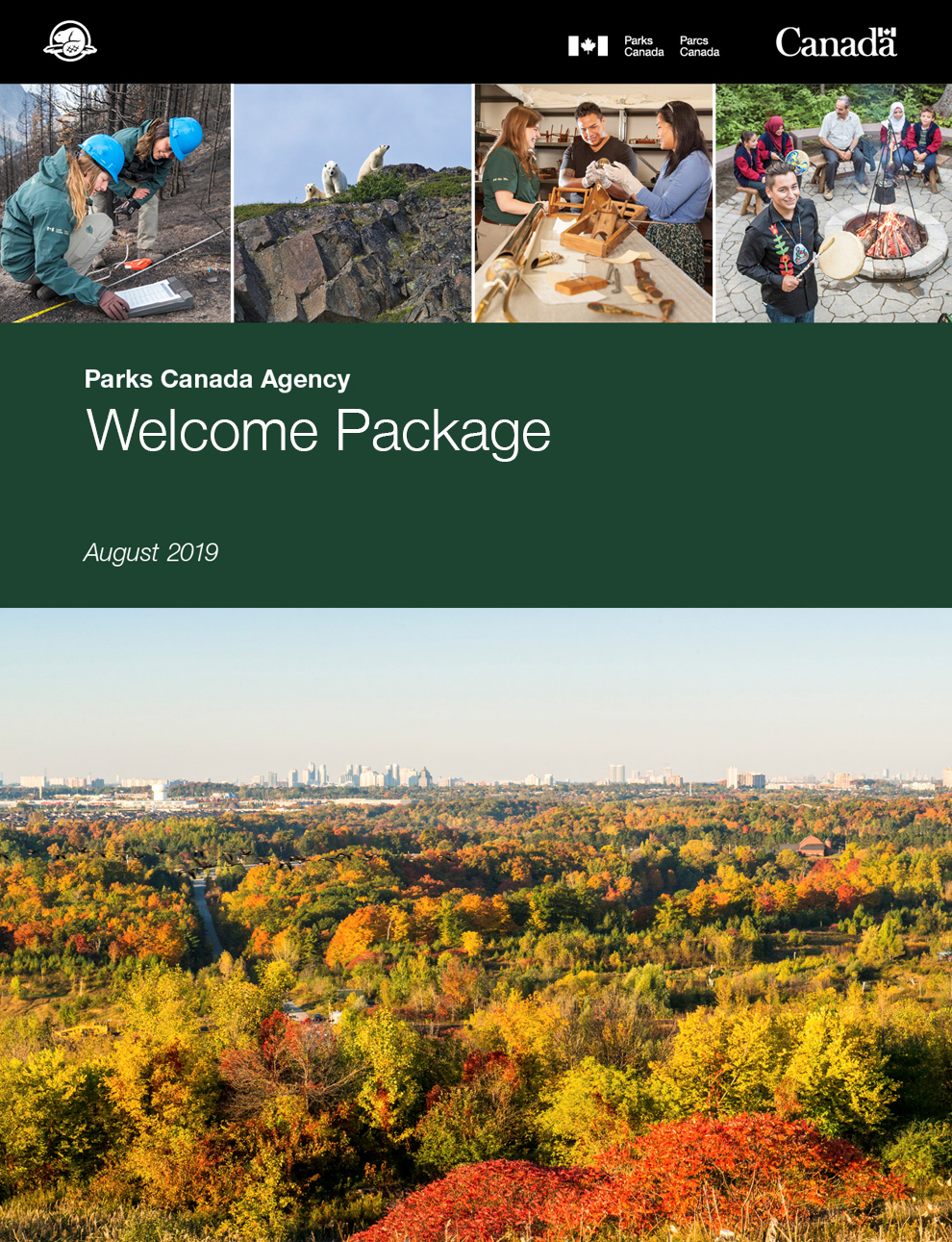
Introduction
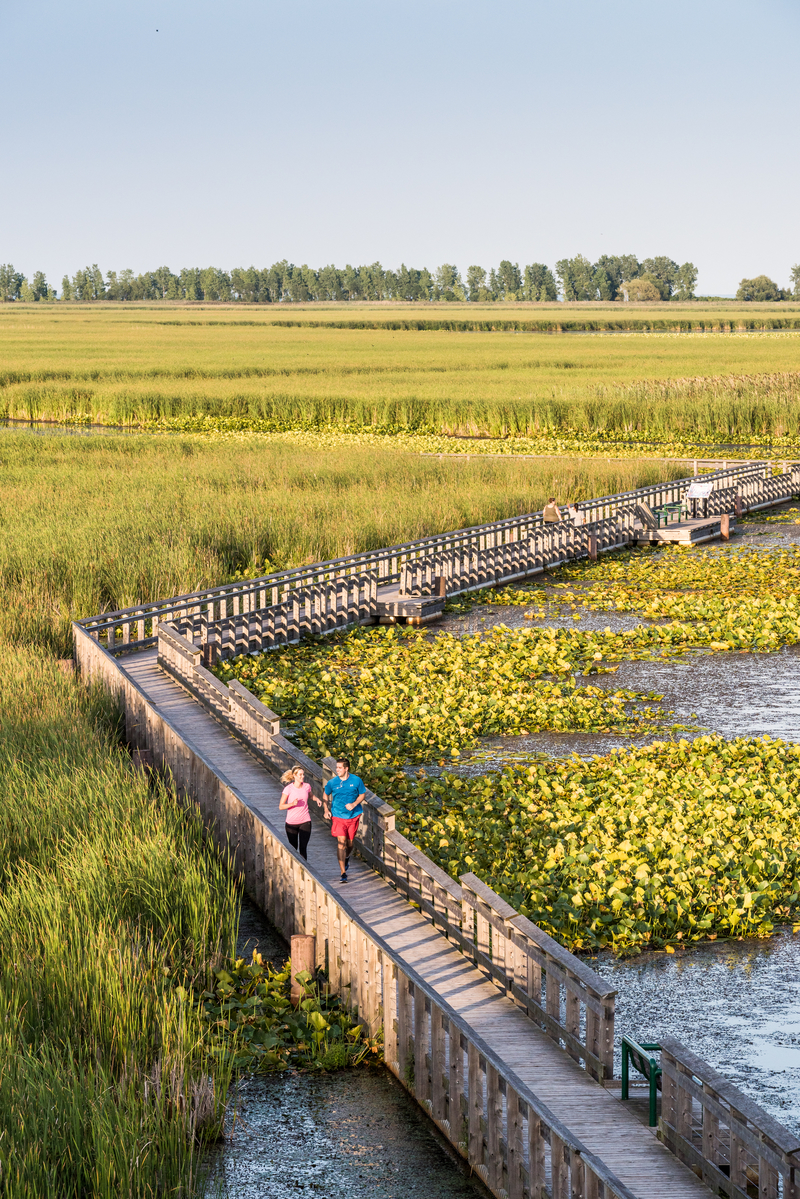
When people think of Canada, they think of its extraordinary geography, its diverse culture and its many historical achievements. Parks Canada is the steward of some of the greatest national examples of Canada’s natural and cultural heritage and is responsible for maintaining their ecological and commemorative integrity for future generations. This network of more than 200 national parks, national historic sites and national marine conservation areas is the envy of the world, and Parks Canada has the privilege of presenting these national treasures to Canadians and to visitors from other countries in ways that foster public understanding, appreciation and enjoyment.
Canada established the first national parks service in the world in May 1911. Parks Canada has been a world leader in the protection and presentation of natural and cultural heritage through its systems of national parks, national historic sites and national marine conservation areas. The Agency is responsible for operations under multiple pieces of federal legislation and protects approximately 450 000 km2 of Canada’s terrestrial, marine and freshwater ecosystems. It is the steward of 47 national parks, one national urban park, four national marine conservation areas and 171 national historic sites, including nine heritage canals.
Parks Canada is committed to protecting and restoring Canada’s national parks and national historic sites by ensuring that they remain healthy and whole, through focused investments and working with Indigenous peoples, provinces and territories and ensuring that ecological integrity is the first priority in decision making in national parks. Similarly, national marine conservation areas are established and managed to ensure ecological sustainability, while promoting awareness and understanding among Canadians and providing benefits for Indigenous peoples and coastal communities. The Agency will enable people to further discover the country’s parks and heritage places through innovative ideas that help share these places and will sustain the incredible value—ecological, cultural and economic—that national parks, national marine conservation areas and national historic sites provide for communities. This includes their value in protecting species at risk, shaping the Canadian identity, creating jobs and economic opportunities for local communities and responding to climate change.
This Welcome Package is intended to introduce you to the mandate and structure of Parks Canada and provide you with an overview of the various functional areas that enable the Agency to meet its mandate.
Parks Canada at a glance
Protect and restore
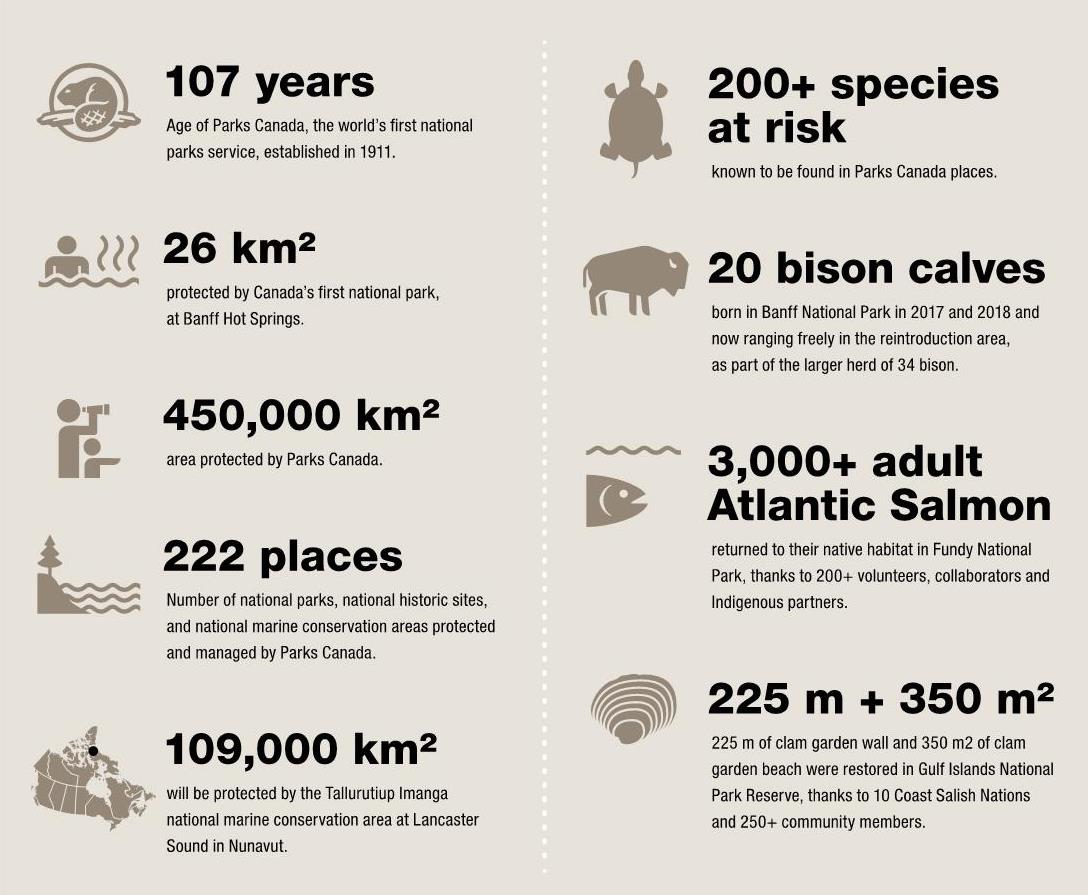
Infographic - Text version
- 107 years - Age of Parks Canada, the world's first national parks service, established in 1911.
- 26 km2 - protected by Canada's first national park, at Banff Hot Springs.
- 450,000 km2 - area protected by Parks Canada.
- 222 places - Number of national parks, national historic sites, and national marine conservation areas protected and managed by Parks Canada.
- 109,000 km2 - will be protected by the Tallurutiup lmanga national marine conservation area at Lancaster Sound in Nunavut.
- 200+ species at risk - known to be found in Parks Canada places.
- 20 bison calves - born in Banff National Park in 2017 and 2018 and now ranging freely in the reintroduction area, as part of the larger herd of 34 bison.
- 3,000+ adult Atlantic Salmon - returned to their native habitat in Fundy National Park, thanks to 200+ volunteers, collaborators and Indigenous partners.
- 225 m + 350 m2 - 225 m of clam garden wall and 350 m2 of clam garden beach were restored in Gulf Islands National Park Reserve, thanks to 10 Coast Salish Nations and 250+ community members.
Sustain

Infographic - Text version
- 2,231 students - employed by Parks Canada in 2018.
- 174 - asset investment projects were completed in 2018-19 across 66 places.
- 9 in 10 - Canadians supported Parks Canada's mandate in 2018.
- Top 3! - Parks Canada ranks in the top 3 of federal government employers on Forbes' list of Canada's Best Employers 2019.
Discover and connect
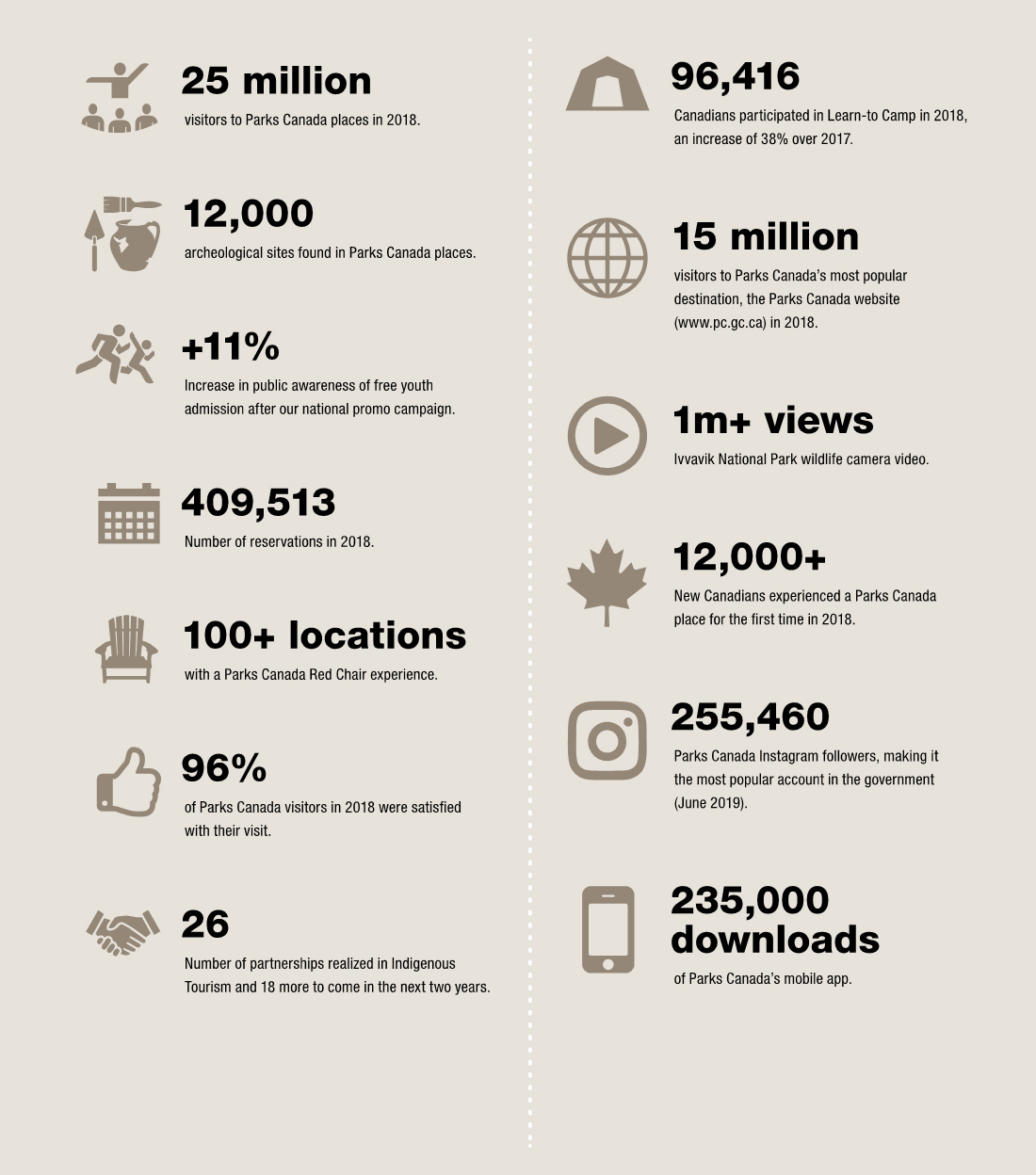
Infographic - Text version
- 25 million - visitors to Parks Canada places in 2018.
- 12,000 - archeological sites found in Parks Canada places.
- +11% - Increase in public awareness of free youth admission after our national promo campaign.
- 409,513 - Number of reservations in 2018.
- 100+ locations - with a Parks Canada Red Chair experience.
- 96% - of Parks Canada visitors in 2018 were satisfied with their visit.
- 26 - Number of partnerships realized in Indigenous Tourism and 18 more to come in the next two years.
- 96,416 - Canadians participated in Learn-to Camp in 2018, an increase of 38% over 2017.
- 15 million - visitors to Parks Canada's most popular destination, the Parks Canada website (www.pc.gc.ca) in 2018.
- 1 million+ views - Ivvavik National Park wildlife camera video.
- 12,000+ - New Canadians experienced a Parks Canada place for the first time in 2018.
- 255,460 - Parks Canada lnstagram followers, making it the most popular account in the government (June 2019).
- 235,000 - downloads of Parks Canada's mobile app.
Parks Canada mandate and places
Parks Canada’s mandate is to protect and present nationally significant examples of Canada’s natural and cultural heritage and foster public understanding, appreciation and enjoyment in ways that ensure their ecological and commemorative integrity for present and future generations.
Parks Canada is responsible for establishing and managing Canada’s system of national parks and national marine conservation areas, representing examples of Canada’s terrestrial natural regions and marine regions.
The system plan for national parks, which was devised in the early 1970s, is 77% complete and represents the diversity of the natural regions and landscapes of 31 of Canada’s 39 terrestrial regions. In managing national parks, Parks Canada maintains and restores ecological integrity and provides Canadians with opportunities to discover and enjoy these special places.
Parks Canada’s portfolio of places includes the Rouge National Urban Park, Canada’s only national urban park. Rouge National Urban Park encompasses cultural and natural heritage places and agricultural lands that will be protected to allow millions of Canadians to connect with their heritage.
The four existing national marine conservation areas represent five of Canada’s 29 natural marine regions and protect both marine and freshwater ecosystems. Additional national marine conservation areas are being established, including the largest protected area in Canada, Tallurutiup Imanga National Marine Conservation Area, in Lancaster Sound, Nunavut. In managing national marine conservation areas, Parks Canada and its partners work to achieve ecological sustainability in these areas, create enjoyable experiences for visitors, promote awareness and understanding among Canadians and provide benefits for Indigenous peoples and communities.
Parks Canada is mandated to protect and present Canada’s cultural heritage. The Agency manages the National Program for Historical Commemoration and supports the work of the Historic Sites and Monuments Board of Canada (HSMBC). On the advice of the Board, the Minister designates national historic sites, persons and events. The Agency currently administers 171 national historic sites. It serves as Canada’s representative at the UNESCO World Heritage Committee and is responsible for administering, in whole or in part, 12 of Canada’s 19 World Heritage sites.
Parks Canada is the federal authority on archaeology on federal lands and lands under water. It is a leading steward of moveable heritage assets in Canada. The national collection of artifacts consists of 31 million historical and archaeological objects with direct links to Canada’s national parks and national historic sites.
The Agency is the largest federal administrator of Crown lands and second largest federal asset manager with over 16,618 built assets, the total replacement value of which was valued at $24.8 billion in 2018. The asset portfolio includes 1,050 km of highways that run through national parks and national historic sites.
Parks Canada’s nine heritage canals support commercial and recreational boating and include 625 km of waterways and more than 200 dams controlling major watersheds in Ontario and Quebec.
Protected areas
National park system
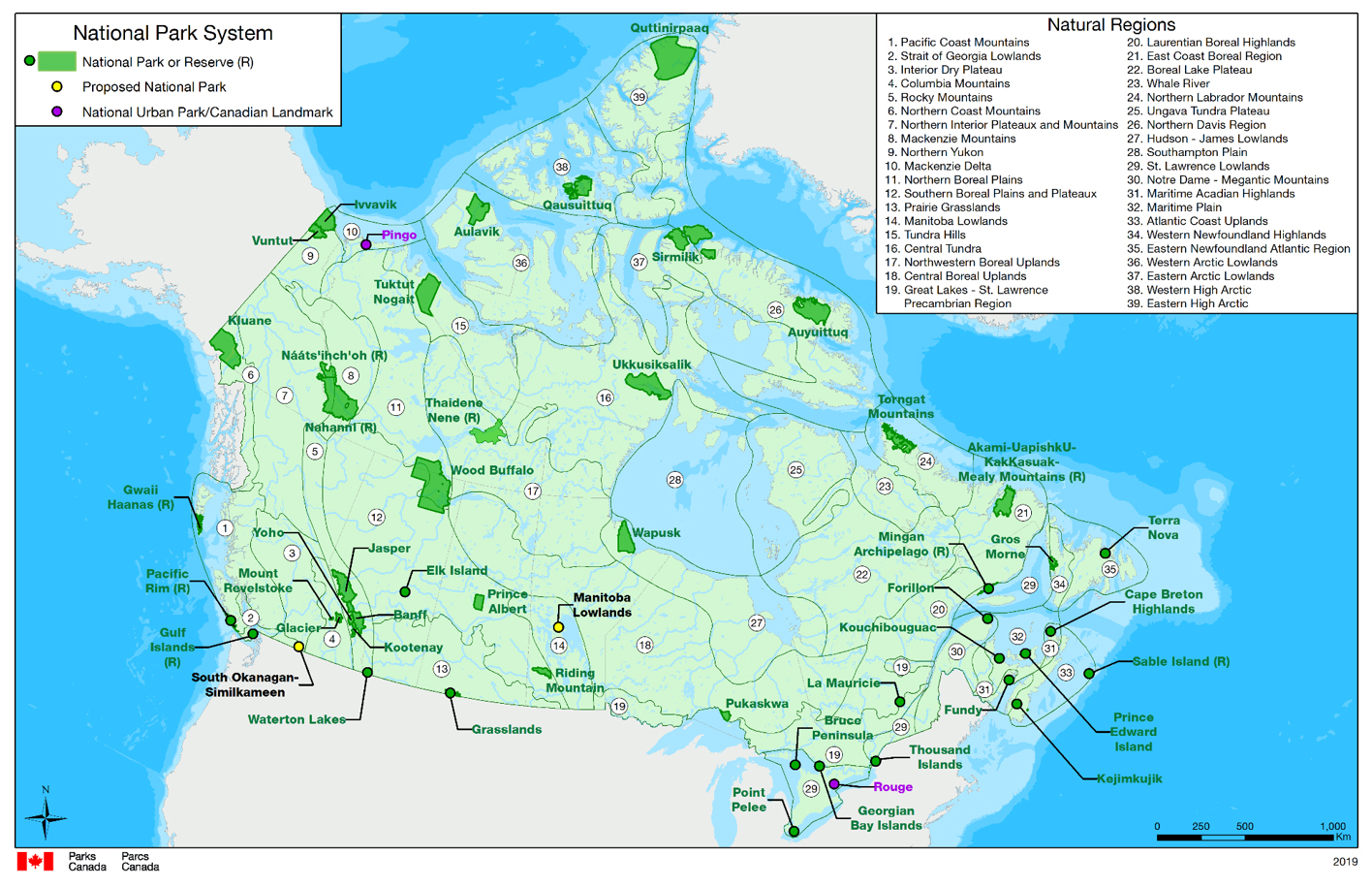
Map - Text version
A map of the national park system of Canada, detailing national parks and national park reserves, proposed national parks, and national urban parks and Canadian Landmarks. Natural park system locations include:
- National Park or Reserve (R)
- Gwaii Haanas (R)
- Pacific Rim (R)
- Gulf Islands (R)
- Mount Revelstoke
- Glacier
- Kluane
- Vuntut
- Ivvavik
- Nááts’ihch’oh (R)
- Nahanni (R)
- Yoho
- Banff
- Kootenay
- Elk Island
- Waterton Lakes
- Wood Buffalo
- Thaidene Nene (R)
- Tuktut Nogait
- Aulavik
- Prince Albert
- Grasslands
- Riding Mountain
- Wapusk
- Ukkusiksalik
- Qausuittuq
- Quttinirpaaq
- Sirmilik
- Auyuittuq
- Pukaskwa
- Point Pelee
- Bruce Peninsula
- Georgian Bay Islands
- Thousand Islands
- La Mauricie
- Forillon
- Kouchibouguac
- Fundy
- Kejimkujik
- Cape Breton Highlands
- Prince Edward Island
- Sable Island (R)
- Terra Nova
- Gros Morne
- Mingan Archipelago (R)
- Akami-UapishkU-KakKasuak-Mealy Mountains (R)
- Torngat Mountains
- Proposed National Park
- South Okanagan – Similkameen
- Manitoba Lowlands
- National Urban Park/Canadian Landmark
- Pingo
- Rouge
Natural region locations include:
- Pacific Coast Mountains
- Strait of Georgia Lowlands
- Interior Dry Plateau
- Columbia Mountains
- Rocky Mountains
- Northern Coast Mountains
- Northern Interior Plateaux and Mountains
- MacKenzie Mountains
- Northern Yukon
- MacKenzie Delta
- Northern Boreal Plains
- Southern Boreal Plains and Plateaux
- Prairie Grasslands
- Manitoba Lowlands
- Tundra Hills
- Central Tundra
- Northwestern Boreal Uplands
- Central Boreal Uplands
- Great Lakes - St. Lawrence Precambrian Region
- Laurentian Boreal Highlands
- East Coast Boreal Region
- Boreal Lake Plateau
- Whale River
- Northern Labrador Mountains
- Ungava Tundra Plateau
- Northern Davis Region
- Hudson - James Lowlands
- Southampton Plain
- St. Lawrence Lowlands
- Notre Dame - Megantic Mountains
- Maritime Acadian Highlands
- Maritime Plain
- Atlantic Coast Uplands
- Western Newfoundland Highlands
- Eastern Newfoundland Atlantic Region
- Western Arctic Lowlands
- Eastern Arctic Lowlands
- Western High Arctic
- Eastern High Arctic
National marine conservation areas
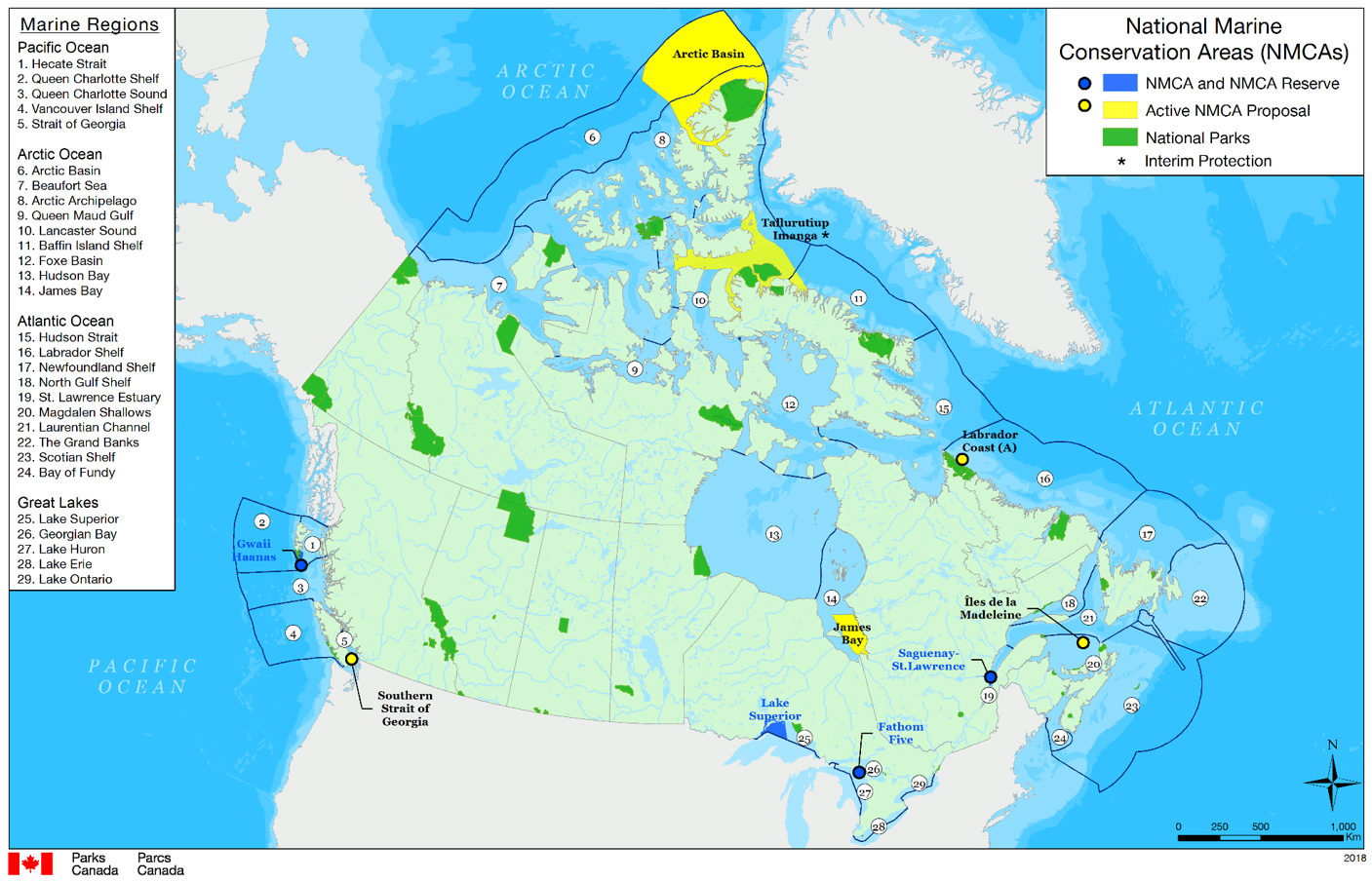
Map - Text version
A map of the national marine conservation areas of Canada, detailing national marine conservation areas and national marine conservation area reserves, active national marine conservation areas, and national parks and and interim protections. Marine conservation areas include:
- NMCA and NMCA Reserve
- Gwaii Haanas
- Lake Superior
- Fathom Five
- Saquenay-St. Lawrence
- Active NMCA Proposals
- Southern Strait of Georgia
- Arctic Basin
- Talluruptiup Imanga (includes interim protection)
- James Bay
- Iles de la Madelaine
Marine region locations include:
Pacific Ocean
- Hectate Strait
- Queen Charlotte Shelf
- Queen Charlotte Sound
- Vancouver Island Shelf
- Strait of Georgia
Arctic Ocean
- Arctic Basin
- Beaufort Seas
- Arctic Archipelago
- Queen Maud Gulf
- Lancaster Sound
- Baffin Island Shelf
- Foxe Basin
- Hudson Bay
- James Bay
Atlantic Ocean
- Hudson Strait
- Labrador Shelf
- Newfoundland Shelf
- North Gulf Shelf
- St. Lawrence Estuary
- Magdalen Shallows
- Laurentian Channel
- The Grand Banks
- Scotian Shelf
- Bay of Fundy
Great Lakes
- Lake Superior
- Georgian Bay
- Lake Huron
- Lake Erie
- Lake Ontario
Who We Are
Parks Canada is led by a Chief Executive Officer (CEO), who is supported by a senior management team. The Agency’s operations are supported by programs and internal services.
Organizational Chart, August 2019

-
Organizational chart - Text version
Chief Executive Officer: Ron Hallman
Operations:
- Senior Vice-President, Operations: Trevor Swerdfager
Programs:
- Vice-President, External Relations and Visitor Experiences: Michael Nadler
- Vice-President, Indigenous Affairs and Cultural Heritage: Joëlle Montminy
- Vice-President, Protected Areas Establishment and Conservation: Darlene Upton
Internal Support Services:
- Vice-President, Strategic Policy and Investment: Stephen Van Dine
- Acting Chief Financial Officer: Ghislaine Lalonde
- Acting Chief Human Resources Officer: Shirley Squires
Financial Overview
The Agency’s permanent budget is approximately $600 million, of which approximately 75% comes from appropriated funds voted by Parliament and 25% from revenues generated by the Agency. In addition, Parks Canada receives time-limited funding for initiatives such as investments in infrastructure and conservation. Parks Canada’s total budget for 2019 to 2020 is estimated to be $1.65 billion, which is over three times the amount of its annual A-Base appropriations.
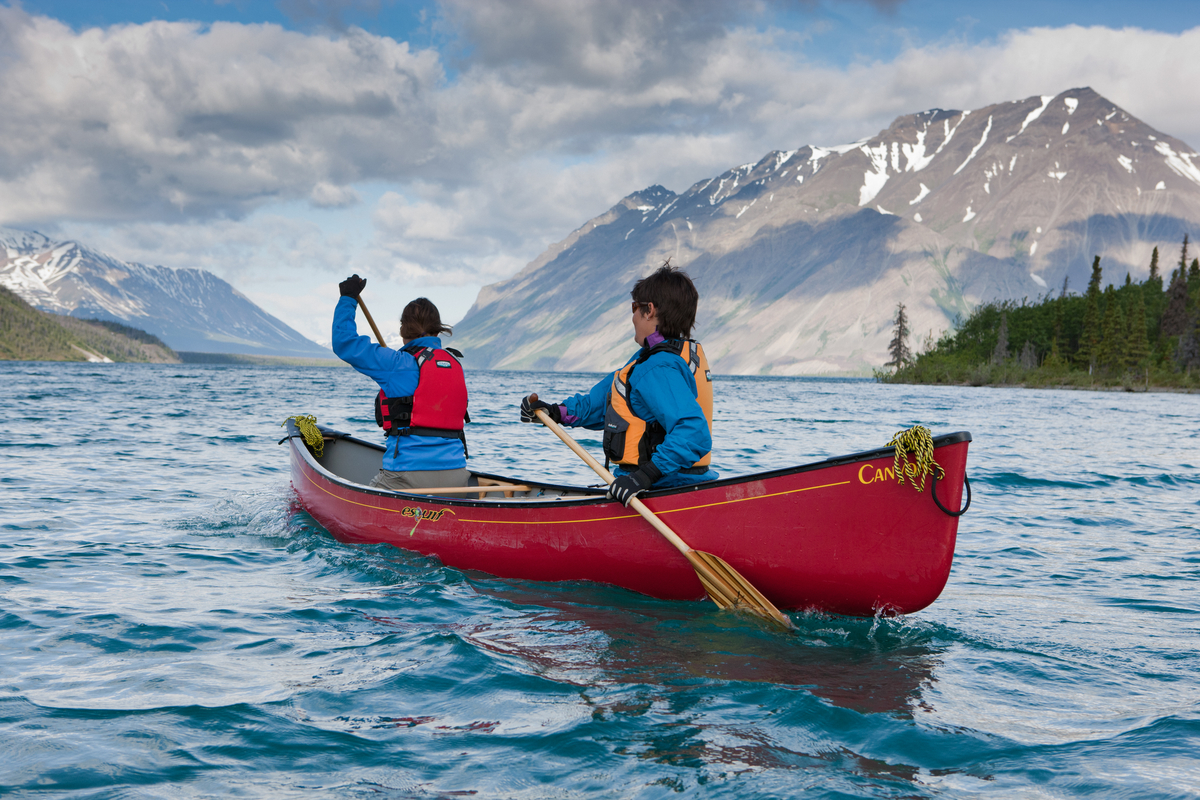
Nature Legacy
In Budget 2018, the Government of Canada made a historic investment of $1.3 billion in nature conservation, known as A Nature Legacy for Canada. This is the single largest investment in conserving nature in Canadian history. Of this funding, $221 million was allocated to Parks Canada over five years and is being used to accelerate the modernization of Parks Canada’s approach to conservation, as well as increasing efforts in the following areas:
- Restoration of ecological integrity of national parks, supporting adaptation to climate change of Parks Canada places and undertaking recovery actions for species at risk;
- Working with others to enhance ecological integration and connectivity of Parks Canada places in the broader landscape;
- Planning and implementing conservation projects respecting Indigenous rights and worldviews, in a way that enables implementation of shared stewardship;
- Enhancing the use of science and other form of knowledge to inform conservation decision-making, planning and implementation; and
- Developing and implementing an Action Plan for Wood Buffalo National Park World Heritage Site to address the threats to the World Heritage values of the site.
Infrastructure funding
Over the past several years, Parks Canada has received approximately $3.6 billion in time-limited infrastructure funding:
- $394 million over five years to make improvements to highways, bridges and dams in national parks and along historic canals (2014 to 2015 through 2018 to 2019);
- $2.56 billion over five years to address the backlog of deferred work to heritage, visitor experience, waterway and highway assets located within national historic sites and national parks across Canada (2015 to 2016 through 2019 to 2020);
- $178 million over four years to improve tourism and highway assets 2016 to 2017 through 2019 to 2020); and
- $364 million over two years to address immediate pressures on high-priority capital asset projects (2018 to 2019 and 2019 to 2020).
Grants and contributions
The Agency has two main contribution programs. The General Class Contributions Program, which primarily supports Indigenous and not-for-profit organizations, and the National Cost-Sharing Program for Heritage Places, which supports the conservation and presentation of national historic sites, heritage lighthouses and heritage railway stations not administered by the federal government.
In addition, starting in 2018 to 2019, Parks Canada signed a $30-million contribution agreement over four years with the Trans-Canada Trail Association to enhance and maintain the Great Trail, a national network of multi-use recreational trails that link 15 000 communities and spans 24 000 km.
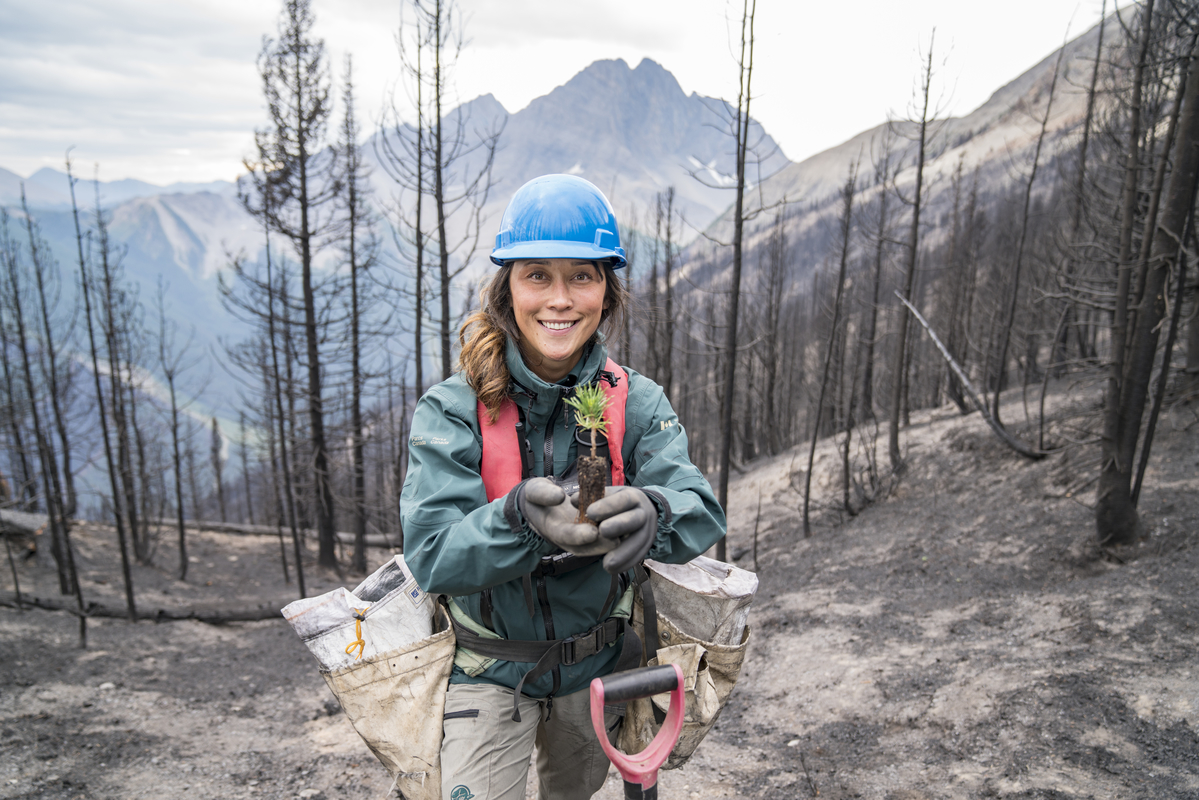
Revenues
The Parks Canada Agency Act authorizes the Agency to retain and re-spend revenues. This is a significant source of funding to support the delivery of Parks Canada programs, including park and site operations and the provision of services to visitors.
The following three main sources account for approximately 85% of Parks Canada’s revenues:
- Entry fees (approximately 45%);
- Camping fees (approximately 20%); and
- Real property rent, business licenses and concessions (approximately 20%).
Human resources overview
The Parks Canada Agency Act established Parks Canada as a separate employer, with the CEO responsible for human resources (HR) matters. While the HR regime is guided by values and operating principles similar to the core public administration, the Agency, as an employer, also has flexibility to manage its workforce appropriate to a highly operational organization.
During peak season, approximately 90% of employees work in regional, remote or northern locations outside the National Capital Region in over 400 communities. The diversity of work carried out at Parks Canada is reflected in over 30 occupational groups ranging from interpretation officers, engineers, biologists, historians, archaeologists and collection specialists to general labourers, corporate administrators and law enforcement officers. Parks Canada has one collective agreement with the Public Service Alliance of Canada, and two-thirds of all staff are unionized.

By the numbers, Parks Canada employs approximately:
- 3400 active indeterminate staff in low season (November to April);
- 4400 active indeterminate staff in high season (May to October); 43% are seasonal staff who work from 13 to 42 weeks a year;
- 2000 students per year, one of the largest federal employers of students; and
- 1600 term (specified period employment) staff.
Overall, after translating the seasonal staffing to full-time equivalence, the Agency had 5566 full-time equivalents (FTEs), which will be reported in the 2018 to 2019 Departmental Results Report.
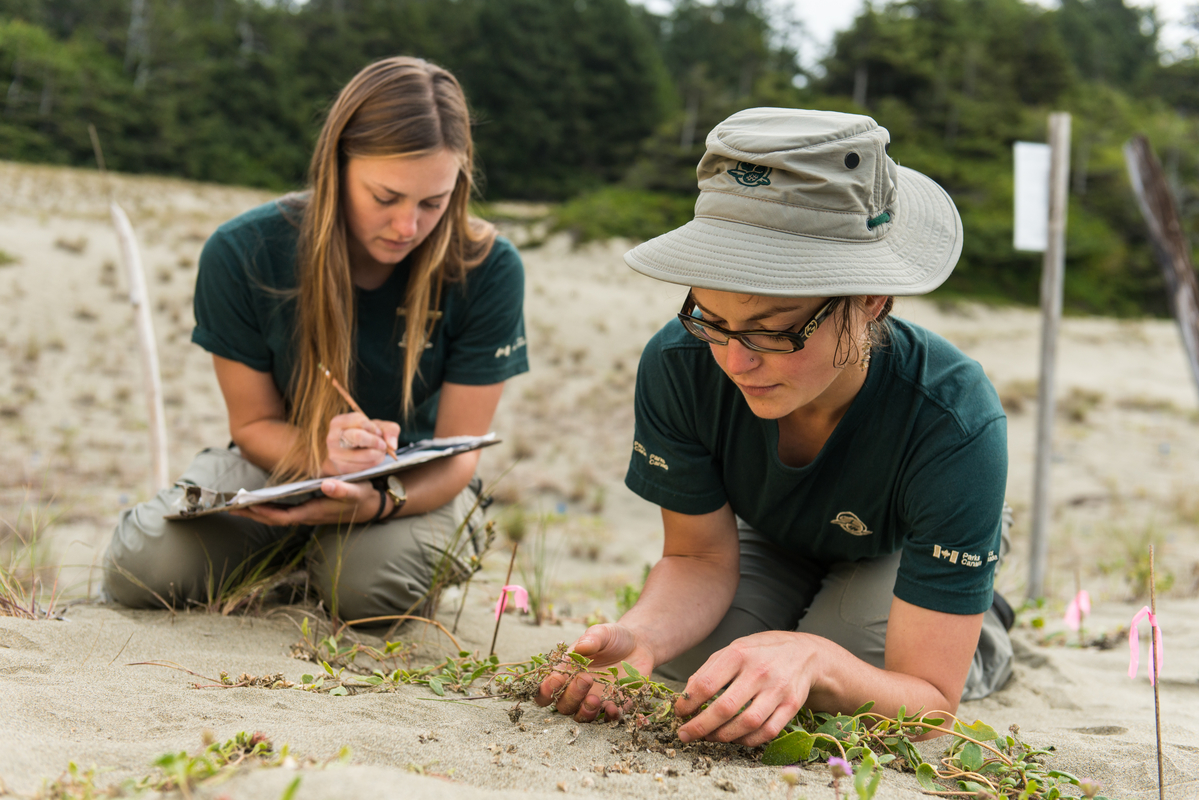
Parks Canada encourages and promotes diversity in the workforce, most notably in the hiring of women and aboriginal peoples. As of March 31, 2019, staff who self-identify as women represent 50% of the workforce, exceeding the National Labour Market Availability (LMA) of 46%. Aboriginal peoples make up 7% of the workforce compared to 8% for the LMA.
Every five years, by law, Parks Canada must conduct an independent review of its HR regime. The latest review, conducted in 2015, concluded that: “On an overall basis, it was found that the Agency’s HR regime is consistent with its values and operating principles. The Agency has a well-established set of values and operating principles in place and, on the whole, the Agency’s HR regime aligns with, demonstrates support for and reinforces the values and operating principles.”
Legislative responsibilities
Parks Canada has a proud history of leadership in the protection and conservation of natural and cultural resources. The legislative framework for managing Canada’s protected areas is broad in scope, and is composed of several acts and regulations.
Acts for which the Minister is responsible
Parks Canada Agency Act, 1998
The Act establishes Parks Canada as a separate agency reporting to the Minister responsible for Parks Canada and provides a broad mandate to the Agency to ensure Canada’s national parks, national historic sites, national marine conservation areas and other heritage areas are protected and presented for present and future generations. The Act imposes oversight and reporting requirements on the Minister and grants flexibility to the Agency on HR and financial matters and broad powers for contracting and the acquisition and disposition of property.
Canada National Parks Act, 2000
National parks are dedicated to the people of Canada for their benefit, education and enjoyment, and parks are to be maintained and used so as to leave them unimpaired for future generations. The Act provides that the Minister is responsible for the administration, management and control of national parks and makes the maintenance or restoration of ecological integrity the first priority when considering park management. Park management plans must be tabled in Parliament within five years of establishment and be reviewed every 10 years. Regulation-making authority is provided for a range of park management issues. There are currently 26 regulations under the Act.
Canada National Marine Conservation Areas Act, 2002
This act establishes national marine conservation areas for the purpose of protecting and conserving representative marine areas that are to be managed and used in a sustainable manner that meets the needs of present and future generations without compromising the function and structure of marine ecosystems. Under the Act, the Minister is responsible for the administration, management and control of national marine conservation areas on matters not assigned to any other Minister of the Crown and is also responsible for the administration of public lands in national marine conservation areas. Management plans for national marine conservation areas must be tabled in Parliament within five years of establishment and reviewed every 10 years. The Minister is required to establish a management advisory committee to advise on these plans, and certain aspects are subject to the agreement of the Minister of Fisheries and Oceans and the Minister of Transport. Regulation-making authority is provided for a range of national marine conservation area management issues. Regulations are currently being developed to address a range of issues, including land use authorization, marine tourism and zoning.
Saguenay-St. Lawrence Marine Park Act, 1997
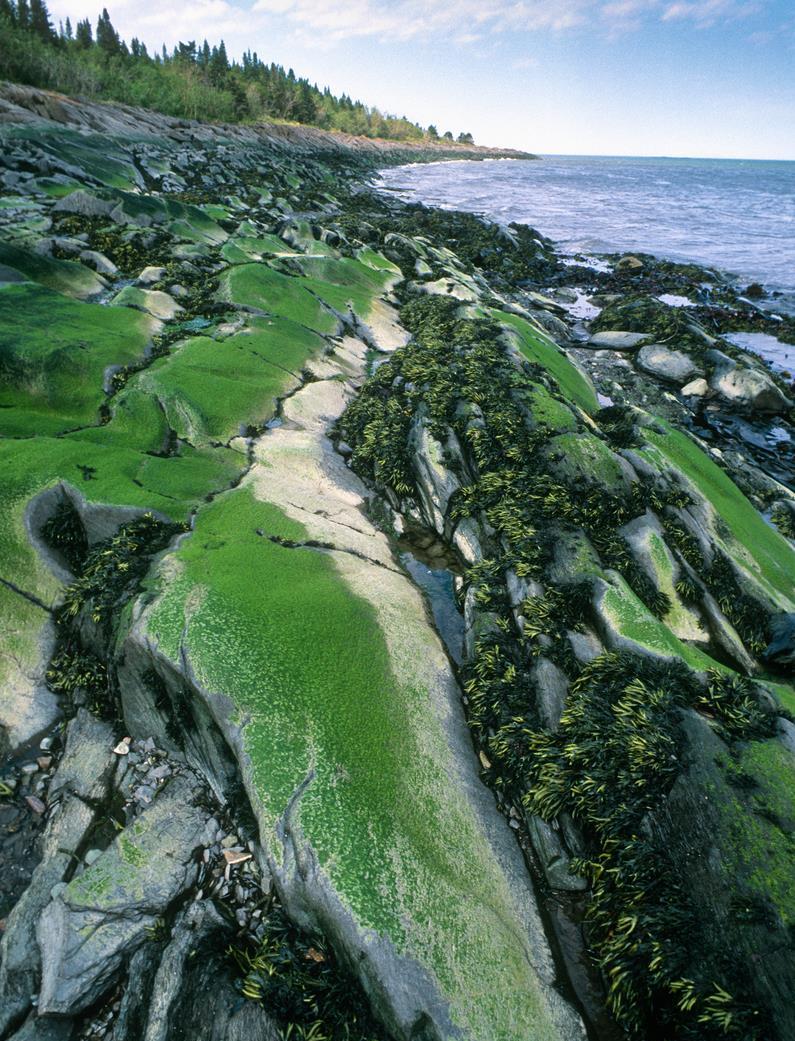
This Act establishes the Saguenay–St. Lawrence Marine Park in accordance with an agreement with the Government of Quebec and provides for the park’s protection while encouraging its use for educational, recreational and scientific purposes. The Minister is responsible for the administration, management and control of the marine park and is required to table a management plan in Parliament to be reviewed every seven years. A coordinating committee makes recommendations to the Minister and the Quebec minister on the implementation of the management plan. An additional committee ensures harmonization of federal and provincial activities and programs. Regulation-making authority is provided on a range of uses, including the protection of ecosystems, the protection of submerged cultural resources, zoning characteristics and the control of the nature and type of activities within the marine park. There is currently one regulation on activities within the marine park, which was last updated in 2017 to increase protection measures for marine animals.
Rouge National Urban Park Act, 2015
This act establishes the Rouge National Urban Park, Canada’s only national urban park, as the newest category of protected areas under Parks Canada’s responsibility. The Act provides for the park’s protection and promotes ecological integrity, culture and agriculture, while respecting the urban infrastructure required of Canada’s largest metropolitan area. The Minister is responsible for the administration, management and control of the national urban park and the administration of public lands in the park. Regulation-making authority is provided on all aspects of management and administration of the urban park. A park management plan was tabled in Parliament in 2018 and must be reviewed every 10 years. The Act was last updated in 2017 to protect the Rouge’s important ecosystems and heritage and to ensure ecological integrity is the first priority when managing the park. The amendments also added lands to the park and clarify that ecological integrity will not prevent the carrying out of agricultural activities.
Historic Sites and Monuments Act, 1985
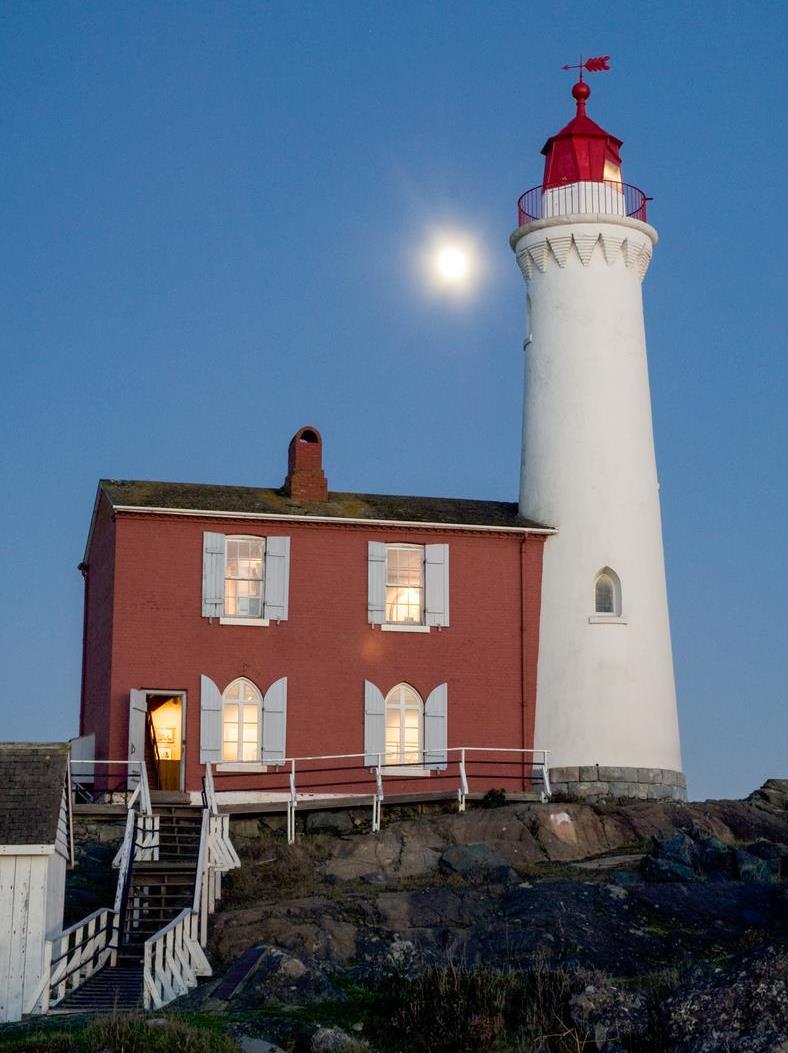
This act formally establishes the HSMBC and provides for the commemoration of national historic sites, persons and events. The mandate of the HSMBC is to advise the Government of Canada, through the Minister responsible for Parks Canada, on the commemoration of nationally significant aspects of Canada's history. Following evaluation and recommendation by the Board, the Minister may declare a site, event or person to be of national historic significance and may recommend commemoration in the form of a plaque or another suitable manner. Members of the HSMBC are appointed by the Governor in Council on the recommendation of the Minister. Parks Canada is committed to adding Indigenous representation to the HSMBC in response to the Truth and Reconciliation Commission’s Call to Action 79.
Heritage Railway Stations Protection Act, 1985
This act provides for the designation of heritage railway stations and requires Governor-in-Council approval of any alteration, demolition or transfer of ownership of a designated heritage railway station. The Act requires that eligible stations be evaluated by the HSMBC, which advises the Minister responsible for Parks Canada whether a building merits designation. The Act provides a process through which proposed changes to heritage railway stations must be reviewed and approved. Regulations govern how notice and application are to be made by an owner for the disposal, demolition, alteration, sale, assignment or transfer of a heritage railway station.
Heritage Lighthouse Protection Act, 2008
This act provides for the designation of heritage lighthouses owned by the federal government, protects the heritage value of designated lighthouses by preventing their unauthorized alteration or disposition and requires that lighthouses are maintained or altered in accordance with established conservation standards. The Minister may designate a nominated lighthouse as a heritage lighthouse under the Act, taking into account the advice of the HSMBC.
National Cemetery of Canada Act, 2009
This act gives honorary recognition to Beechwood Cemetery in Ottawa, Ontario, as the national cemetery of Canada.
Laurier House Act, 1952
This act provides the Minister with responsibility for the administration of the property and contents of Laurier House National Historic Site of Canada and the funds in the Mackenzie King Trust Account, in accordance with the will of the late Right Honourable William Lyon Mackenzie King.
Other acts of importance
Species at Risk Act (SARA), 2002
The Minister of Environment has the lead responsibility for administration of the Act, in cooperation with the Minister of Fisheries and Oceans and the Minister responsible for Parks Canada (also the Minister of Environment). Parks Canada is responsible for the protection of species at risk, their residences and their critical habitat on Parks Canada lands and waters. This includes the development and implementation of recovery strategies and action plans and the implementation of legal protection of critical habitat.
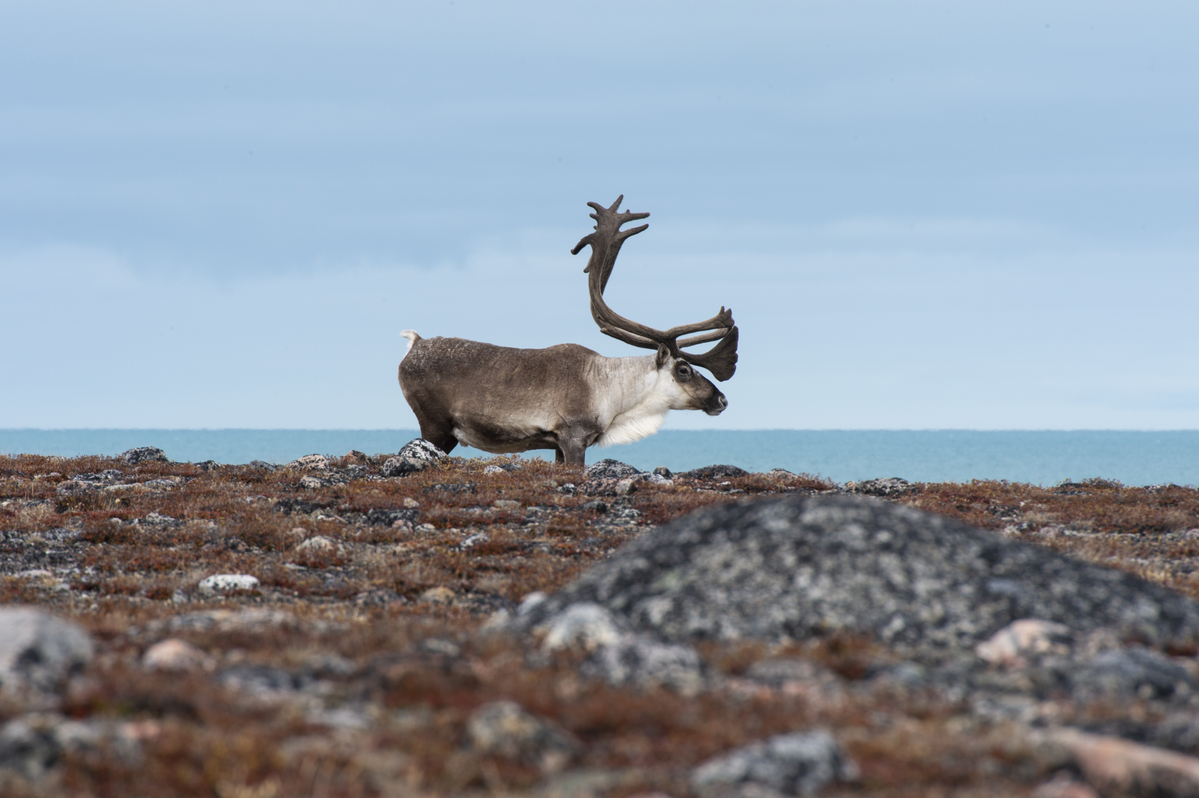
Department of Transport Act, 1985
With respect to the heritage canals, the Minister responsible for Parks Canada has the power, duties and functions of the Minister of Transport under the Department of Transport Act. This act provides the regulatory authorities for the Historic Canals Regulations and the Canal Regulations. These regulations govern the management, maintenance, use and protection of the nine heritage canals administered by Parks Canada and provide the authorities to control various land- and water-based activities and navigation. The nine heritage canals are: St. Peter’s Canal in Nova Scotia; Saint-Ours, Chambly, Carillon, Sainte-Anne-de-Bellevue and Lachine canals in Quebec; and Rideau and Sault Ste. Marie canals and the Trent-Severn Waterway in Ontario. The Parks Canada Agency Act confirms that Parks Canada is responsible for the administration and enforcement of the Historic Canals Regulations.
Service Fees Act, 2017
The Service Fees Act, under the President of the Treasury Board, establishes requirements for all new fees fixed by a regulatory authority and for making changes to existing fees. It also establishes to reporting requirements and service standards. Most of the fees established by Parks Canada are subject to the requirements of this statute.
The Services Fees Act, which replaces the 2004 User Fees Act, is intended to improve consistency in setting fees and strengthen cost recovery for fees, where appropriate. A key provision of the new act is the establishment of mandatory increases to service fees, using the Consumer Price Index as the default price adjustment mechanism. Implementation is being led by the Treasury Board Secretariat and the Office of the Comptroller General. Parks Canada is impacted by the legislation, and the Agency is developing and implementing plans for compliance with the new law.
Impact Assessment Act, 2019
Impact assessment is a key project planning tool that helps Parks Canada achieve its mandate. This act requires that Parks Canada conduct impact assessments on projects on land managed by Parks Canada and provides the opportunity for Parks Canada to participate in assessments of projects located outside protected heritage places that may impact those places. The Act primarily applies in the provinces. Other legislation outlines the requirements for impact assessment in the territories. The Impact Assessment Act, which replaces the Canadian Environmental Assessment Act 2012, provides more detailed direction for Parks Canada on carrying out impact assessments, including a new requirement to post notices of projects on the Internet.
Contraventions Act, 1992
This act is used to prosecute violations of minor federal laws through a ticketing system rather than a criminal charge. Regulatory offences created by Parks Canada statutes are designated as contraventions under this act.
Federal Real Property and Immovables Act, 1991
Under the President of the Treasury Board, the Act provides a framework for the acquisition, administration and disposition of real property and immovables by the Government of Canada, including those administered by Parks Canada.
Wrecked, Abandoned or Hazardous Vessels Act, 2019
Under this act, the Minister of Transport and the Minister responsible for Parks Canada have joint authorities to make regulations for the protection and preservation of heritage wrecks in Canadian waters. Parks Canada is currently engaging stakeholders on the potential development of these regulations.
Navigation Protection Act, 1985
Under the Minister of Transport, the Act regulates works and obstructions that risk interfering with navigation in the waters listed on the schedule to the Act, including those administered by Parks Canada.
Dominion Water Power Act, 1919
Under the Minister of Intergovernmental Affairs, Northern Affairs and Internal Trade, the Act controls the development and use of water power on any federal property and applies to water powers on lands administered by Parks Canada.
Parks Canada overview: What we do
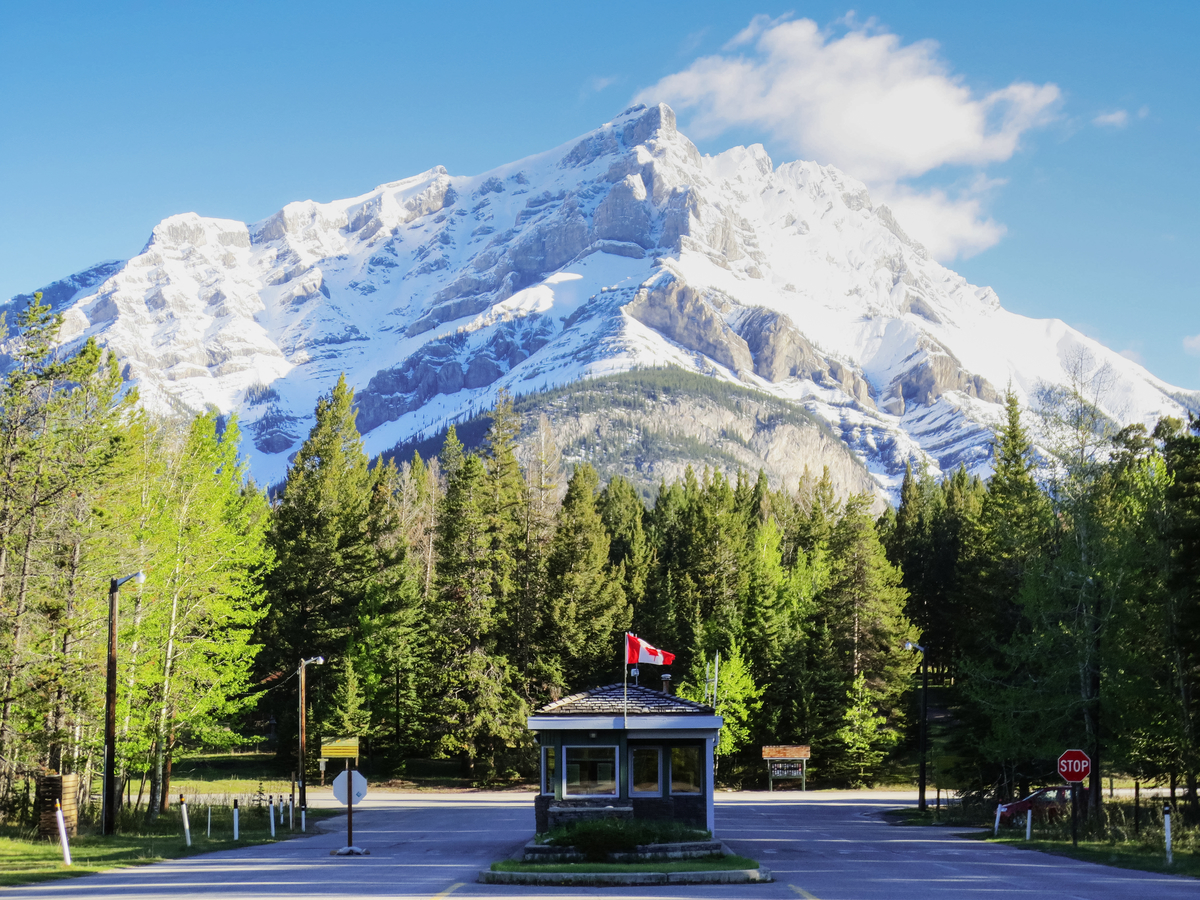
Parks Canada’s mandate requires year-round operations across Canada. With responsibility for the management and administration of 47 national parks and Rouge National Urban Park, four national marine conservation areas and 171 national historic sites, including nine historic canals, Parks Canada employees and resources are active in hundreds of communities and remote locations from coast to coast to coast. The workforce is dedicated to conserving Parks Canada places and sharing these places with visitors. In addition, the Agency is responsible for a diverse range of built assets and activities—from the Trans-Canada Highway that runs through the Mountain Parks in Alberta and British Columbia, to avalanche response along mountain highways and fire response in all the park areas. The Agency has a search-and-rescue capacity, dedicated wildlife personnel, an armed enforcement branch and an underwater archaeology group. Parks Canada cares for 31 million artifacts used actively in its sites for interpretation purposes and held in collections facilities to preserve them. The following provides an overview of the operational activities:
Ecological integrity
Parks Canada studies, monitors, reports on and maintains the state of park ecosystems under the Canada National Parks Act, ecological integrity is the first priority in the management of national parks. The Agency undertakes ecological restoration, mitigates environmental impacts, manages wildland fire and manages and remediates contaminated sites. Parks Canada controls invasive species, protects species at risk and reintroduces species into native habitats. The Agency manages human-wildlife interactions to minimize conflict, ensure connectivity of habitat and improve human-wildlife coexistence across the landscape.
Marine conservation
Parks Canada and its partners manage national marine conservation areas with an overarching goal: to protect and conserve representative marine ecosystems and key features within those ecosystems, while ensuring national marine conservation areas are used in an ecologically sustainable manner. Ecological sustainability is achieved in a national marine conservation area when marine biodiversity and ecosystem processes are protected, resilient and capable of supporting a range of ecologically sustainable uses.
Commemoration and cultural heritage conservation
Parks Canada plays an important role in the commemoration of nationally significant places, persons and events and administers a number of heritage programs that contribute to the conservation and presentation of historic places. The Agency is also responsible for ensuring the commemorative integrity of the 171 national historic sites under its administration and the management of cultural resources in accordance with sound conservation principles and practices. Parks Canada also manages and curates a vast collection archaeological and historical artifacts. Some artifacts are displayed and interpreted through Parks Canada places for Canadians to enjoy and connect with the country's history.
Visitors
Parks Canada welcomes some 25 million visitors each year and offers memorable experiences, visitor activities and events. As a result of the success of free admission in 2017, visitation reached 27 million. Visitors report high satisfaction with the quality of visitor services, facilities and safety programs. Visitor services and programs include: interpretation, re-enactments, facilities, campgrounds, trails, wildlife monitoring and reservation systems.
Safety
Parks Canada issues avalanche bulletins, undertakes search-and-rescue operations, protects Parks Canada townsites, infrastructures and other values from wildfires and operates emergency dispatch. The Agency provides safety information to visitors, including travelling in backcountry environments or encounters with wildlife. For visitors to the northern national parks, a portion of the safety information includes what to do when encountering a polar bear or how to prevent hypothermia.
Infrastructure and municipal-type services
Parks Canada is responsible for the safety and maintenance of the Trans-Canada and provincial highways within national parks, including avalanche mitigation, snow removal, inspections, repairs and replacement of highway surfaces, retaining walls, bridges and culverts. Recently, the Agency invested heavily in reducing wildlife mortality from motor vehicle collisions by fencing critical sections of highways and building over and underpasses to maintain habitat connectivity. Parks Canada provides municipal services in five townsitesFootnote1 including drinking water, sewage treatment, road maintenance, snow removal and garbage collection and disposal.
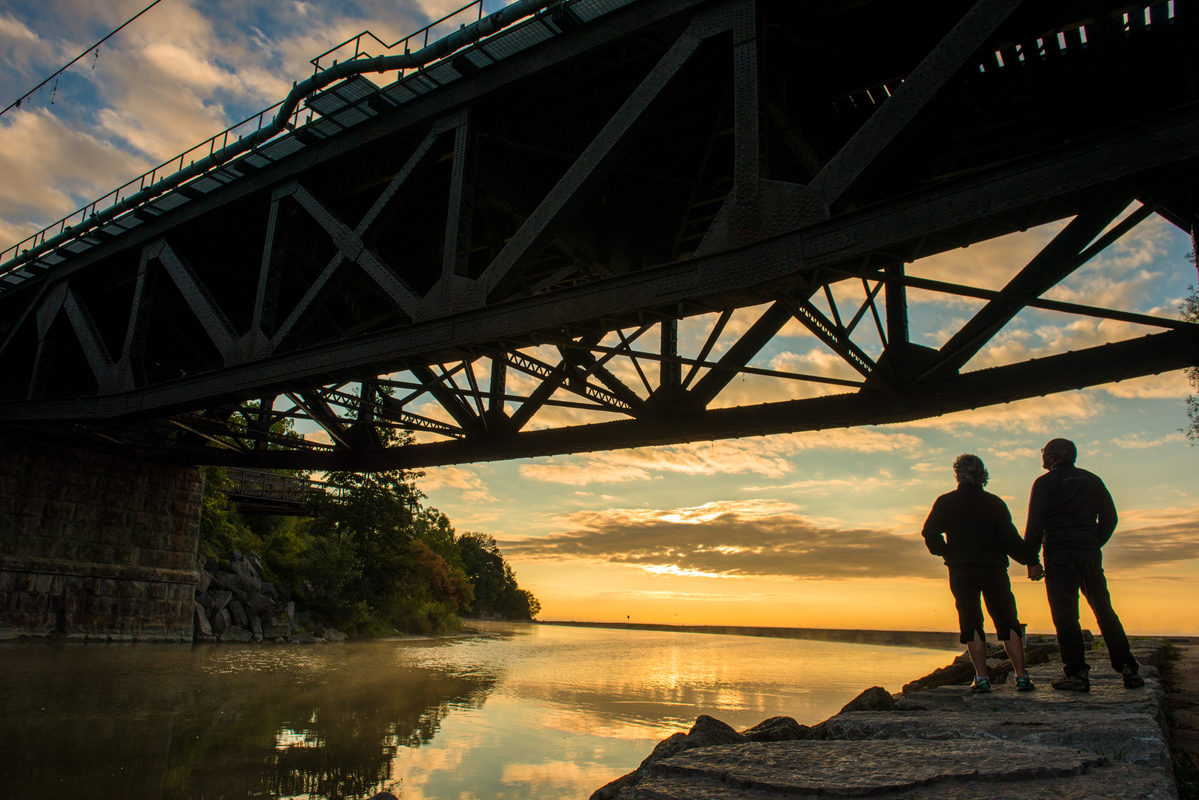
Real property management
Parks Canada is the largest federal administrator of Crown lands and maintains records for all leases, acquisition and disposal of these Crown lands. Parks Canada’s realty operations include the policies and administration of real property transactions on behalf of the Agency, acquisition and disposal of park lands, the issuance of both residential and commercial leases, licences, special permits and the management of potential development opportunities. Parks Canada has over 9700 real property agreement with lessees, mostly in the Mountain Parks, townsites and along the Ontario waterways, as well as over 350 staff housing units across the country and remote areas.
International engagement
The Agency undertakes a wide variety of international activities that support the delivery of the Agency’s mandate and contribute to global efforts to protect and present natural and cultural heritage places around the world. Parks Canada plays a leadership role in targeted international conventions and agreements, including the implementation of the UNESCO World Heritage Convention and membership in the International Union for Conservation of Nature. The Agency supports broader Government of Canada policy objectives through close relationships with other federal government departments, Canadian and international organizations and counterpart agencies in other countries.
Operations
FTEs: 4250 (Eastern Canada: 2231 | Western and Northern Canada: 2005 | Senior Vice-President, Operations: 14)
The Senior Vice-President, Operations, provides leadership in the day-to-day management and delivery of services and programs at more than 200 Parks Canada places. As the largest component of the Parks Canada team, encompassing over 80% of the Agency, the Operations Directorate is split into six regions, each led by an Executive Director: Atlantic, Quebec and Nunavut, Ontario and Waterways, Prairies and Northwest Territories, Alberta, and British Columbia and Yukon. Within those regions, 34 field units are responsible for operating and maintaining national parks, national marine conservation areas, national historic sites, waterways, townsites and over 3300 km of roadways. Parks Canada operations are an integral part of the local community fabric, impacting over 450 communities across the country. Parks Canada’s nine historic canals—over 625 km of waterways—for example, run through a total of 75 communities, providing employment, recreational and tourism opportunities for the local economies.
Operations staff contribute directly to natural resource conservation. Their work includes monitoring and restoring ecological integrity in national parks, achieving ecological sustainability in national marine conservation areas, protecting and recovering species at risk and habitats, managing hyperabundant and invasive species, managing wildlife health and human-wildlife coexistence, conducting impact assessments and managing fire. Operations staff work with stakeholders and partners, including Indigenous knowledge holders, to protect and manage these places from a landscape-scale conservation perspective.
Operations staff on the ground are the face of Parks Canada, facilitating memorable and safe experiences for our visitors. This includes welcoming 25 million visitors and delivering the high levels of learning (81%), satisfaction (96%) and enjoyment (96%) (Visitor Information Program, 2018) visitors have come to expect at Parks Canada places. The Agency maintains and manages 95 campgrounds, hundreds of picnic and day-use areas, 56 visitor centres, kiosks and discovery centres and offer in-person interpretation at over 80 national historic sites.
A year in the life of Operations involves preparation and planning to operate both seasonal and year-round facilities and programs, managing peak periods of visitation and implementing programs that help achieve natural and cultural conservation objectives such as ecological monitoring, restoration and fire programs, cultural resource management, action plans for species at risk and helping to ensure safe coexistence between wildlife and people. Ongoing work includes managing and maintaining built assets; undertaking and supporting scientific and archaeological projects; and collaborating and coordinating with Indigenous partners and provincial, territorial, municipal, non-governmental, volunteer and private sector stakeholders. Formal structures are in place to facilitate the cooperative management of over 30 Parks Canada places with local Indigenous communities and to ensure that Indigenous perspectives and knowledge is reflected in decision making.
Operations is key to delivering on Agency priorities at local levels across the country. In structuring its work, Operations relies on policy and program leadership of national office directorates, while providing insight and guidance into the development of nationally led initiative. This supportive relationship between operations in the field and functional leadership allows for efficiency and standardization across the country.
Reintroduction of bison into Banff National Park
In 2018, Parks Canada released a small herd of Plains bison that is now roaming freely in the 1200 km2 reintroduction area in Banff National Park. This marks an exciting phase of the project to assess bison behaviour, survival and evidence of keystone roles returning to the ecosystem.
Wild Plains bison had been absent from Banff National Park and the surrounding area since before the park’s creation in 1885. Reintroducing a small herd in the park’s eastern slopes, a remote wilderness area that provides suitable habitat, will contribute to conservation and recovery efforts and reconnect Canadians and First Nations to this iconic species. It will also help assess whether wider restoration of this species is possible in a broader area.
Parks Canada is working with Treaty 7 Nations, Treaty 6 Nations and the Metis Nation of Alberta on the project. This has included sharing traditional knowledge, blessing and celebrating the animals and habitat and participating in stewardship and events. In future, there may be opportunities for Indigenous partners to harvest bison and obtain their remains for traditional use.
Watch the video: Watch bison take their first steps in the wild in Banff National Park.
Protected areas establishment and conservation
FTEs: 213
The Protected Areas Establishment and Conservation Directorate provides functional leadership, policy direction, programming, and operational support related to the establishment and management of natural heritage places. It advances the establishment of new national parks and national marine conservation areas through negotiation with provinces, territories, Indigenous groups and other stakeholders. In addition, the directorate houses the park wardens, who are responsible for enforcing all legislation related to Parks Canada’s mandate on all lands and waters it administers.
In establishing and managing natural heritage places, the Agency works with Indigenous groups in maintaining the integrity of the environment and the health of natural and cultural resources.

The directorate is responsible for:
- Leading feasibility assessments and negotiations for the establishment of new national parks and national marine conservation areas;
- Establishing policy direction and providing operational support for natural resource conservation to maintain or restore ecological integrity in national parks and manage ecological sustainability in national marine conservation areas;
- Leading and providing guidance and support for implementing the Species at Risk Act and other species conservation programming within the Agency;
- Leading wildland fire management, including elements of wildfire suppression, wildfire risk reduction, prescribed burns and ecological restoration;
- Recruiting, training and equipping parks wardens and establishing policy and providing advice and analysis related to law enforcement;
- Conducting law enforcement activities to protect natural and cultural resources and to ensure that visitors enjoy safe and memorable experiences;
- Providing expert ecosystem science advice and analysis on high-profile and emerging issues related to protected areas establishment and management;
- Providing relevant climate change adaptation advice, tools and support to senior management, field units and various functional communities (e.g. asset management, built heritage and impact assessment);
- Establishing and maintaining key federal and provincial relationships related to protected areas establishment and natural resource conservation;
- Leading and supporting international efforts focused on natural heritage, including engagement under the International Union for Conservation of Nature and the Convention on Biological Diversity; and
- Supporting the creation of federal regulatory tools and the development of Parks Canada tools, guidance and training in response to the proposed Impact Assessment Act.
The Protected Areas Establishment and Conservation Directorate, in collaboration with Operations and other programs, is also currently consulting with Canadians on proposed policy and regulatory changes to the national marine conservation areas program (www.letstalknmcas.ca). These consultations will help the Agency revise its 1994 National Marine Conservation Areas Policy and start the formal process of developing regulations under the Canada National Marine Conservation Areas Act.
Fire management
Parks Canada is a leader in protected areas fire management and the use of prescribed fire to restore, enhance and maintain natural habitat conditions. We have led over 300 prescribed burns since 1983, restoring over 80 000 hectares of vegetation and habitat across Canada in national parks and national historic sites. In addition to helping restore Canada’s ecosystems and improve the condition of ecological integrity indicators, these controlled burns are used to protect cultural resources, reduce wildfire hazards around values at risk and re-establish the role of fire as a natural process and maintain fire resilient landscapes to face the challenges of climate change.
Watch the video: The Burning Question.
Looking forward:
With funding announced under Budget 2018, the Protected Areas Establishment and Conservation Directorate will modernize the Agency’s approach to conservation to deliver on its Nature Legacy commitments. Working with the Operations Directorate, these efforts will focus on four outcomes:
- Parks Canada is better able to maintain and restore healthy ecosystems, support adaptation to climate change and undertake recovery actions for species at risk.
- Parks Canada is working with partners to enhance the contribution of its places to landscape-scale conservation.
- Parks Canada’s conservation policies and practices respect Indigenous rights and knowledge systems and create opportunities for Indigenous stewardship.
- Parks Canada’s use of multiple forms of evidence is enhanced to support conservation planning and action.
The Directorate will also revise the National Parks System Plan by 2020 to account for current conservation science, Indigenous knowledge and considerations related to climate change, biodiversity and other environmental factors. It will also lead the work to establish new national parks and national marine conservation areas in support of international biodiversity targets, including Canada Target 1, which aims to conserve 17% of terrestrial areas and inland water and 10% of coastal and marine areas through networks of protected areas and other effective area-based conservation measures.
As State member for the International Union for Conservation of Nature, the Directorate is leading the Government of Canada's preparations for the 7th World Conservation Congress to be held in Marseille, France, in June 2020. It also supports Environment and Climate Change Canada in the process to develop the post-2020 Global Biodiversity Framework, which will be adopted at the 15th Conference of the Parties to the Convention on Biological Diversity in China in October 2020.
Indigenous affairs and cultural heritage
FTEs: 213
Parks Canada works with more than 300 Indigenous groups across Canada to conserve, restore and present Canada’s natural and cultural heritage. The Indigenous Affairs and Cultural Heritage Directorate provides guidance for working with Indigenous peoples by providing tools and direction at a national level, as part of the Agency’s commitment to a system of national heritage places that commemorates the contributions of Indigenous peoples, their histories and cultures, as well as the special relationship Indigenous peoples have with traditional lands and waters.

The directorate also focuses on research, policies, standards and conservation measures for the commemoration and protection of Canada’s cultural heritage. Its role as functional lead for cultural heritage includes supporting the Agency’s field operations in the management, conservation and presentation of national historic sites and cultural resources and managing the national collection of 31 million historical and archaeological objects. The directorate also supports the Agency in its role as the federal lead for archaeology on federal lands and lands under water, as well as on built heritage conservation, including the implementation of the heritage clauses contained in the Treasury Board Secretariat’s Policy on Management of Real Property (2006).
Relationships with Indigenous peoples
Building strong relationships based on the recognition of rights, respect cooperation and partnership is essential to the process of reconciliation between Indigenous peoples, the Government of Canada and Canadians.
Currently, Parks Canada’s work is divided into three priority areas:
- Strengthening Indigenous connections with traditionally used lands and waters;
- Expanding and ensuring presentation and commemoration of Indigenous histories and cultures; and
- Increasing economic opportunities for Indigenous partners, such as Indigenous tourism activities.
The directorate is responsible for:
- Agency representation during negotiations at Recognition and Implementation of Indigenous Rights and Self-Determination tables and other land claim-related agreements;
- Development of policy, tools and strategies to support the implementation of the United Nations Declaration on the Rights of Indigenous Peoples and Section 35 rights under the Canadian Constitution;
- Guidance and support for consultations and engagement with Indigenous peoples;
- Training, national policy direction and implementation advice for cultural resource management in all Parks Canada-administered places;
- Historical research relevant to Parks Canada places;
- Terrestrial and underwater archaeology within Parks Canada places;
- Management of a national collection of 31 million archaeological and historic objects, curation and object conservation;
- Support to the HSMBC in its role as advisor to the Minister on the designation of historic places, persons and events;
- Heritage programs including: the National Cost-Sharing Program for Heritage Places, the Federal Heritage Buildings Review Office; the National Program for the Grave Sites of Canadian Prime Ministers; and the Canadian Heritage Rivers Program and the administration of the Heritage Railway Stations Protection Act and Heritage Lighthouse Protection Act;
- Tools and registries to engage Canadians in the conservation of historic places including: the Canadian Register of Historic Places; the Directory of Federal Heritage Designations; and the Standards and Guidelines for the Conservation of Historic Places in Canada;
- Serving as the Agency’s Centre of Expertise on international engagement and providing leadership and guidance on the implementation of international conventions, agreements and programs under Parks Canada’s areas of responsibility;
- The implementation of the UNESCO World Heritage Convention in Canada (the Vice-President of Indigenous Affairs and Cultural Heritage acts as the Head of the Canadian delegation to the World Heritage Committee); and
- Supporting Parks Canada’s intergovernmental engagement to promote federal/provincial/territorial collaboration on natural and cultural heritage issues.
Looking forward:
The directorate will continue to play a leadership role for the Agency as a whole in the implementation of the Government’s commitments to reconciliation with Indigenous peoples. This work includes supporting business units in the implementation of the Agency’s work plan: Mapping Change – Fostering a Culture of Reconciliation within Parks Canada. Parks Canada is also the lead on the implementation of Call to Action 79 of the Truth and Reconciliation Commission. In response to this call, Budget 2018 provided $23.9 million over five years to integrate Indigenous views and history at heritage places managed by the Agency.
The directorate is also leading the implementation of the Framework for History and Commemoration. This new system supports reconciliation efforts by setting a new direction for the commemoration and presentation of history at Parks Canada. It enables the Agency to tell broader, more inclusive stories at heritage places, including the history of Indigenous peoples.
The directorate will continue its works to strengthen the conservation of historic places in response to the recommendations of the Standing Committee on Environment and Sustainable Development and the Office of the Auditor General Report. In addition, the directorate is advancing the consolidation of the collection of historical and archaeological objects―one of the largest in North America―to a new purpose-built collection facility in Gatineau, Quebec. This initiative will help ensure the sustainable management and conservation of the collection. As part of this process, the directorate is engaging Indigenous groups on the conservation of Indigenous artifacts and objects.
Under Phase 1 of the Government’s Laboratories Canada initiative, the Indigenous Affairs and Cultural Heritage Directorateis working with partners, including the Canadian Conservation Institute and the Canadian Heritage Information Network, to create a Cultural Heritage Science Cluster. This cluster will include centralized conservation laboratories to encourage greater collaboration and innovation among conservation scientists, researchers and students. The directorate will also lead the implementation of Parks Canada’s International Strategy to support the Agency’s leadership role within the international natural and cultural heritage community.
Underwater archaeology
Parks Canada is an international leader in underwater archaeology. For over a decade, Parks Canada led the search for the ill-fated Franklin Expedition in Canada’s Arctic waters, in collaboration with both public and private partners. With the discovery of HMS Erebus in 2014 and HMS Terror in 2016, Parks Canada has shifted its focus from searching to leading one of the largest and most important underwater archaeological undertakings in Canadian history.
Using its new Research Vessel David Thompson as its main platform, Parks Canada has been researching and exploring both wrecks to help unravel the 170-year-old mystery of what happened to Sir John Franklin and his crew.
As joint owners with Inuit of any artifacts recovered, Parks Canada will work closely with the Inuit Heritage Trust, local communities and the future co-management board for the Wrecks of HMS Erebus and HMS Terror National Historic Site to help bring this story to all Canadians.
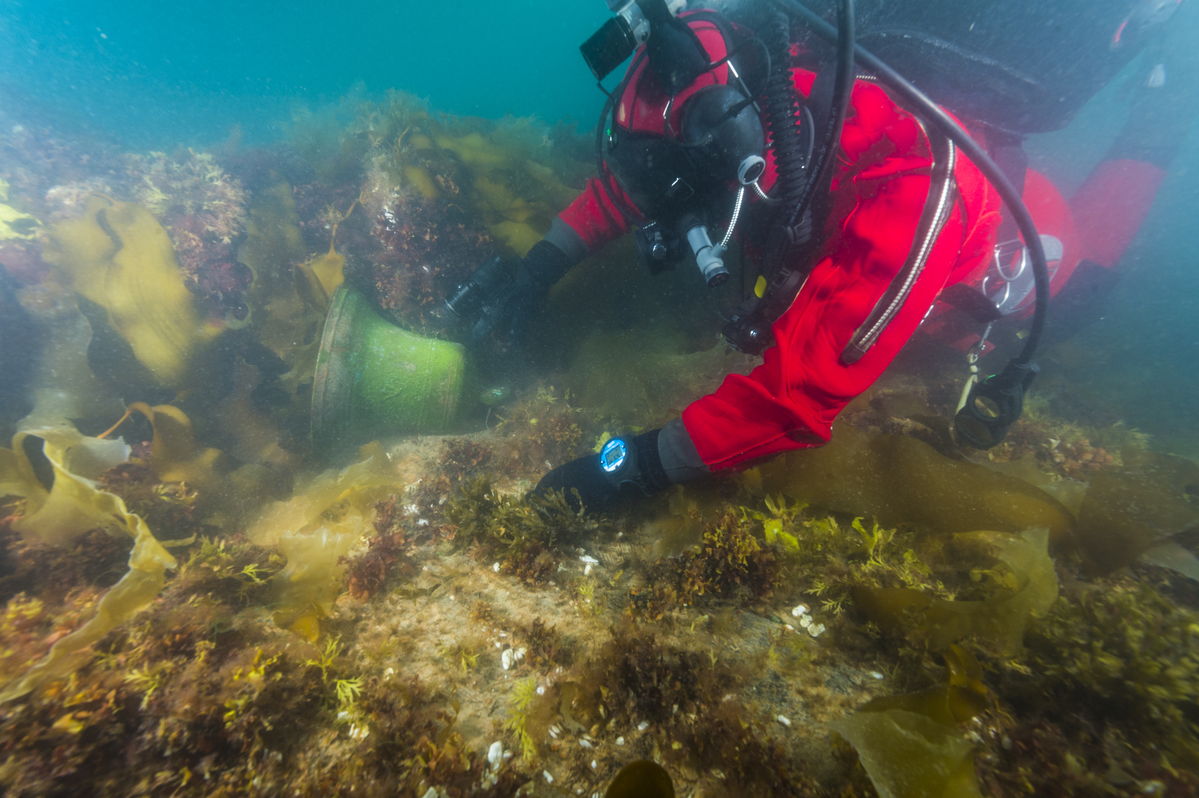
External relations and visitor experience
FTEs: 236
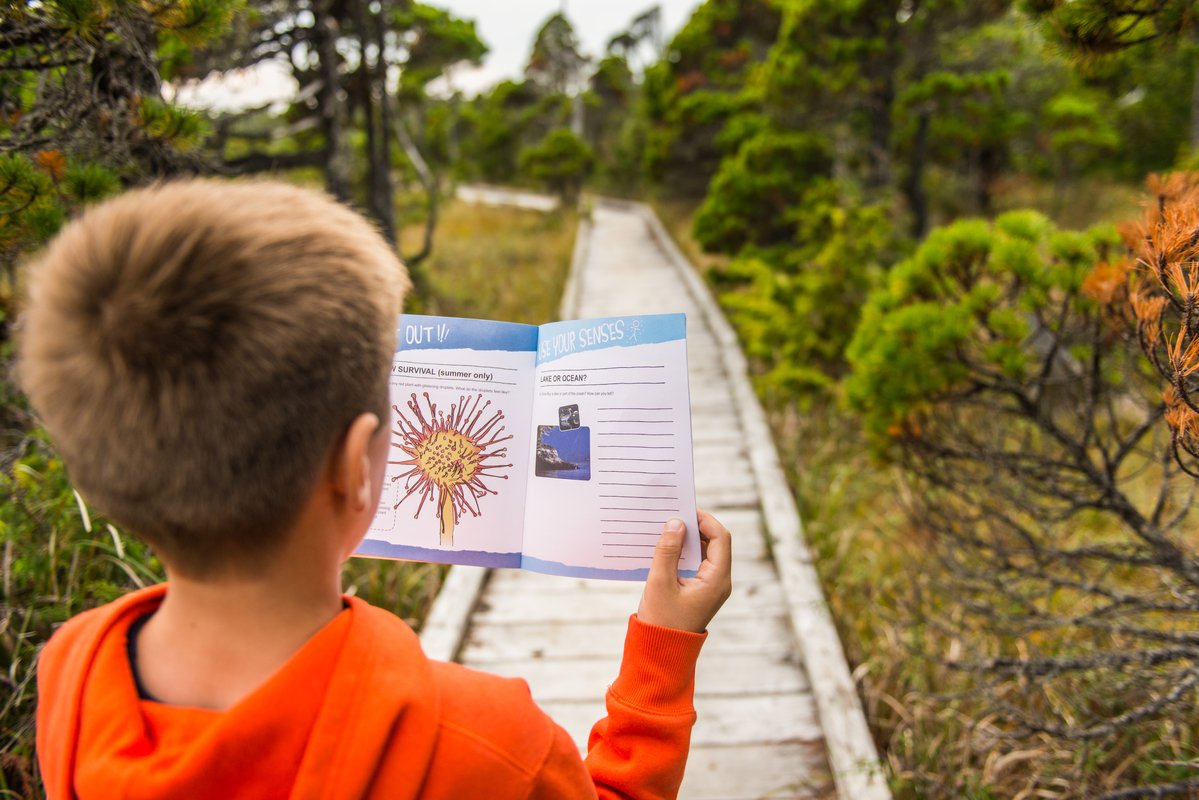
Parks Canada is committed to the development of programs and services that encourage Canadians to experience national parks, national historic sites and national marine conservation areas and learn more about the natural environment and Canada’s heritage. The External Relations and Visitor Experience Directorate provides national leadership in the promotion of Parks Canada and its places, national communications and the development of outstanding experiences for more than 20 million visitors received by the Agency every year. The directorate works with field units, national office business units and a broad array of partners to deliver the Agency’s mandate.
Learn-to camp
Parks Canada’s Learn-to Camp initiative helps visitors overcome barriers to connecting with nature, such as setting up a tent or cooking in the outdoors, and the number of participants increased from 11 000 in 2016 to almost 100 000 in 2018 through 500 events.
The directorate is responsible for:
- Providing strategic direction to the Agency through the On Target Strategy 2019-2022 which guides programs, services and activities to connect Canadians to their natural and cultural heritage.
- Supporting the development and delivery of high-quality visitor experiences for millions of visitors each year;
- Marketing and promotions of Parks Canada places and experiences and the Agency’s work in science and conservation;
- Outreach and learning initiatives in urban areas, including celebration of key Canadian milestones;
- Public affairs, media relations and corporate and public communications, including events and announcements;
- Social science research, including market analytics, economics and visitation and revenue projections;
- Managing national relations with the tourism industry;
- National social media, website, mobile application and new media initiatives;
- National strategic partnerships, including support to other business units in their external engagement and collaboration activities;
- Access to Information and Privacy for the Agency;
- Pricing and visitor fees at Parks Canada; and
- Indigenous tourism.
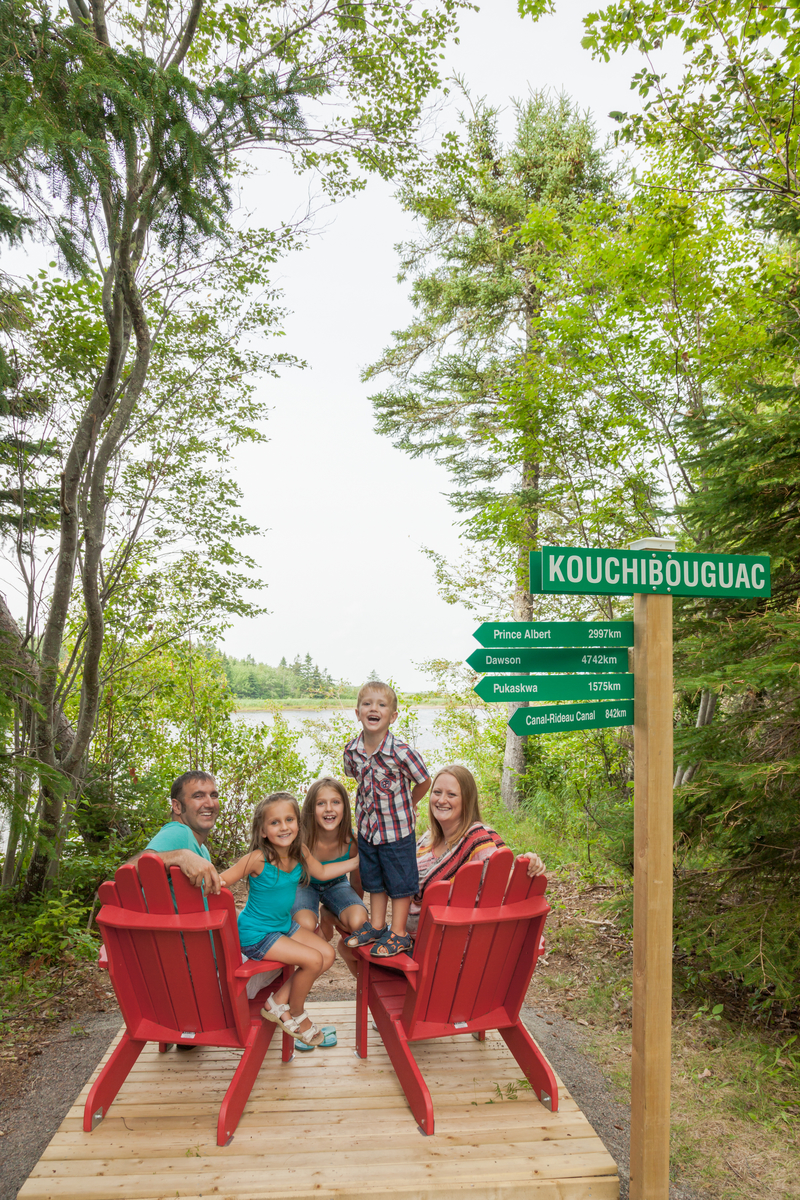
Looking forward:
Encouraging Canadians to develop a deeper connection to Canada’s natural and cultural heritage is a key aspect of Parks Canada’s mandate to “foster public understanding, appreciation and enjoyment in ways that ensure the ecological and commemorative integrity of these places for present and future generations.” Through a variety of channels, Canadians, in particular youth and families with young children, are informed about and invited to Parks Canada places. Experiencing national parks, national historic sites and national marine conservation areas provides significant learning opportunities, made more memorable by the knowledgeable staff who tell the story of these unique sites to visitors. This deeper connection and understanding of Canada’s natural and cultural heritage will help grow a culture of protecting these special places.
Citizenship ceremonies
Parks Canada hosts citizenship ceremonies each year in some of the country’s most treasured natural and cultural places, from Fort Langley National Historic Site of Canada in British Columbia to Ardgowan National Historic Site of Canada in Charlottetown, Prince Edward Island. In addition, to introduce them to Parks Canada places, the Agency is committed to providing free admission for all new citizens into its places during their first year of Canadian citizenship, through collaboration with the Institute for Canadian Citizenship’s Cultural Access Pass program.

Internal services
FTEs: 654
Three directorates make up Internal Services: the Strategic Policy and Investment Directorate, the Chief Financial Officer Directorate and the Human Resources Directorate.
Strategic Policy and Investment Directorate
The Strategic Policy and Investment Directorate’s work focuses on delivering a combination of internal services as well as programs. The directorate provides direction and oversight for Agency-wide investment planning, realty services, information management and technology, asset management including the delivery of projects, as well as management of the integrated planning and reporting cycle. The directorate also leads all legislative and Cabinet processes for the Agency and plays a key liaison role with central agencies on strategic issues and initiatives.
With the substantial funding received over the past few years for investments in built assets, the Strategic Policy and Investment Directorate is focused on developing the planning processes and monitoring to ensure investment funds are allocated to the highest priority assets. These investment funds are being used to recapitalize assets across the portfolio, including heritage, tourism, waterway and highway assets within national historic sites, national parks and national marine conservation areas.
The directorate is responsible for:
- Strategic delivery of investment projects in support of Parks Canada assets (built assets, highways, waterways, etc.);
- Development and implementation of national asset management services, programs and tools;
- Active management of the asset portfolio, including the development of standards for assessing and reporting on asset condition;
- Oversight of investment planning and projects and the implementation of investment decisions, including monitoring, assessing and reporting on performance;
- Management of realty services, waterpower and administrative services, facilities and environmental management and security;
- Development and oversight of medium- and long-term plans for ensuring the long-term sustainability of Parks Canada’s capital assets;
- Development and coordination of all Agency legislative and regulatory proposals and Cabinet business;
- Leadership and management of the Agency’s integrated, corporate planning and reporting cycle;
- Management of Parks Canada’s information management/information technology infrastructure, in collaboration with Shared Services Canada; and
- Implementing, coordinating and monitoring a departmental security program consistent with the Policy on Government Security and its standards to ensure that employees, information, assets and services are safeguarded.
Chief Financial Officer Directorate
The Chief Financial Officer Directorate provides strategic advice on financial management of the Agency and ensures key stewardship of financial resources through a financial framework that considers legislative, policy, procedural, standards and directive requirements, guidance and tools for the financial and contracting activities of Parks Canada. The directorate plays an important role in providing the Agency with objective advice and guidance on funding initiatives, resource allocation, financial reporting and disclosure requirements and deals with Central Agency on all financial matters. It also has a monitoring and reporting role, internally, to Parliament and to Canadians, including providing a challenge function for business decisions.
The directorate is responsible for:
- Strategic financial planning, budgeting, forecasting and reallocation framework and processes to meet both the Agency's internal financial management requirements and Central Agency requirements (including main and supplementary estimates, annual reference levels and financial statements);
- Financial attestation on all Memoranda to Cabinet and Treasury Board submissions;
- National leadership in the areas of financial policies, financial delegations, financial training, system interfaces, quality assurance and internal control activities within the Agency;
- Corporate and asset accounting services and reporting and providing consolidated service delivery for accounts payable, accounts receivables, revenue processing and travel and relocation services;
- National leadership, strategic advice and guidance on all aspects of procurement and contracting to meet the Agency’s needs for construction, services and goods; and
- Management of the Agency's Centre of Expertise for Grants and Contributions programs and providing advice for use of other financial instruments.
Human Resources Directorate
As Parks Canada is a separate employer, the Human Resources Directorate not only provides national policy direction, guidance and tools for people management in the Agency, but also plays the role of central agencies in many ways. It considers legislative, policy, procedural, standards and directive requirements. The directorate performs an important function for the Agency by providing objective advice and ensuring our team members are successfully placed and prepared to deliver Parks Canada services and mandate.
In providing excellence in client service delivery, the directorate is responsible for:
- Establishing the policy and programming framework and providing guidance and support for their interpretation;
- Negotiating collective agreements and supporting their implementation;
- Supporting the stabilization of the pay administration;
- Supporting strategic departmental decision-making with strong people management planning, data and analytics;
- Organizational design and job classification system;
- Health and safety regime for the organization and disability management; and
- Front-line service delivery for national office directorates in relations to recruitment and staffing.
Twinning the Trans-Canada Highway
There are 185 km of the Trans-Canada Highway (TCH) that pass through the Mountain Parks (Banff, Yoho, Glacier and Mount Revelstoke national parks of Canada), and Parks Canada has completed numerous twinning projects over several decades, starting at the East Gate of Banff National Park and moving westward with the objective of decreasing the number of fatal collisions, reducing the mortality rates for wildlife, increasing wildlife connectivity and decreasing travel time.
Currently, 88 km of the TCH are twinned – 82 km in Banff National Park and the eastern-most 6 km in Yoho National Park. There remains 97 km of untwinned TCH under the Agency’s jurisdiction in the Mountain Parks.
Parks Canada received funding under Budget 2016 for construction of 6 km of twinning in Yoho National Park. This section is open to traffic, with final work under way. Budget 2016 also provided funding for design, environmental assessment and consultations for the twinning of the remaining 40 km of the TCH through Yoho National Park.
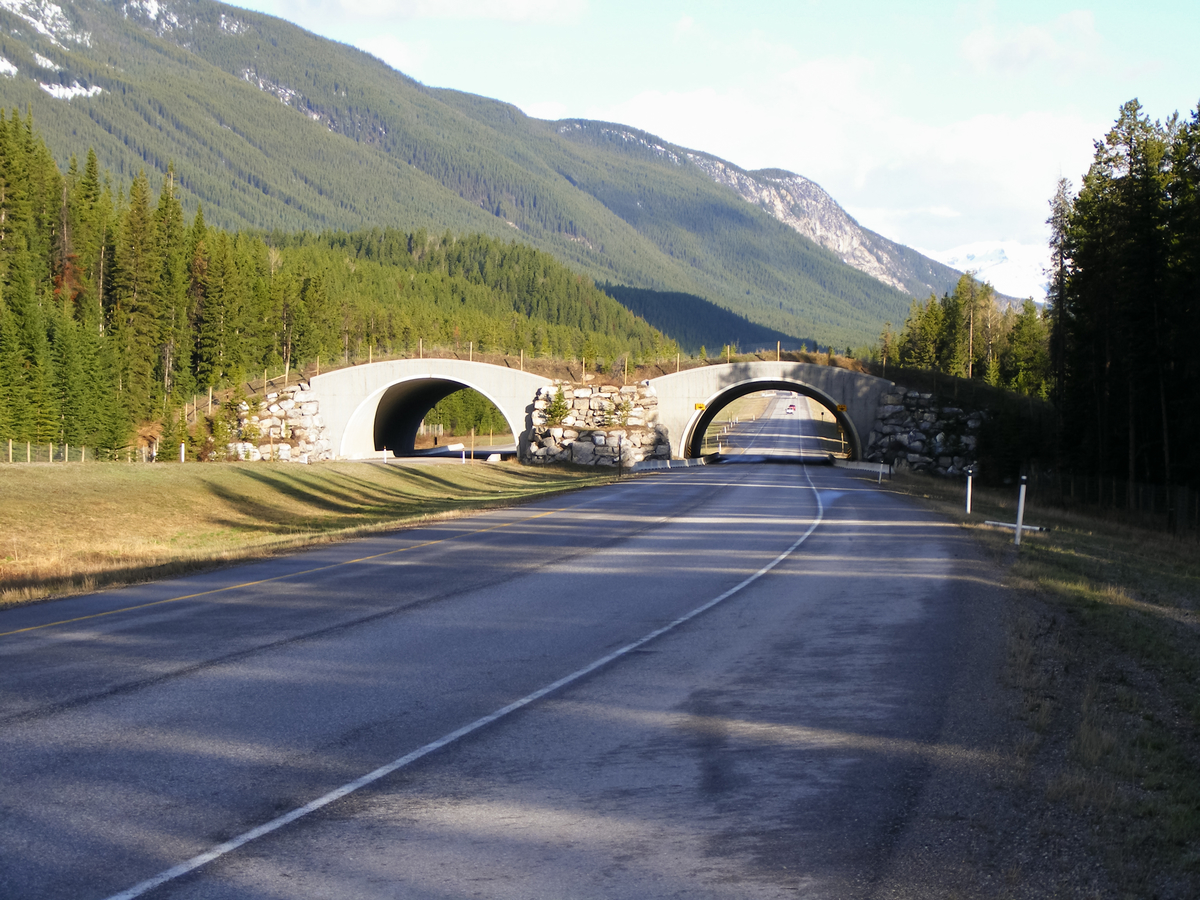
Looking forward:
Given the number of potential initiatives moving forward, Internal Services has an important role to play in providing analysis, information technology services assessment and advice to all business units to support the Agency’s conservation plan, provide policy direction, guidance and tools for people management, promote visitor experience and make Parks Canada’s infrastructure safer and more appealing to visitors.
The Agency’s efforts will continue to be focused on supporting key initiatives such as Reconciliation, Federal Infrastructure Investment projects, Nature Legacy and Long-Term Asset Sustainability Strategy. The Agency will also implement a new integrated planning approach to support strategic departmental decision-making.
The Agency is pursuing best practices in managing and maintaining the built asset portfolio. Since 2014, the Agency has and is investing over $3.6 billion in projects to recapitalize assets and address outstanding deferred work. In addition, as an active asset manager, the Agency actively manages the current asset base to ensure the portfolio is tightly linked to mandate delivery.
Pocket book - Library references
Public reports

Protected Areas Establishment and Conservation Directorate – Natural Resource Conservation Branch
- Parks Canada Conservation and Restoration programs – Overview
- Parks Canada Conservation and Restoration Programs – A Natural Priority: A report on Parks Canada’s Conservation and Restoration Program (2018)
- The State of Canada Natural and Historic Places (2016)
The Minister’s Round Table Report on Let’s Talk Parks, Canada! (2017)
Parks Canada’s Departmental Plan 2019-2020
Parks Canada Sustainable Development Strategies
Management Plans for National Parks and National Historic Sites
Auditor General



Related links
- Parks Canada Agency Overview, October 2021
- First 100 days issues
- Appearance before the Standing Committee on Environment and...
- Appearance before the Standing Committee on Environment and...
- Appearance before the Standing Committee on Environment and...
- Appearance before the Standing Committee on Environment and...
- Appearance before the Standing Committee on Environment and...
- Appearance before the Standing Committee on Environment and...
- Appearance before the Standing Committee on Environment and...
- Corporate Book - November 2019
- Key messages, stakeholders and media links - August 2019
- Briefing book - November 2015
- Date modified :